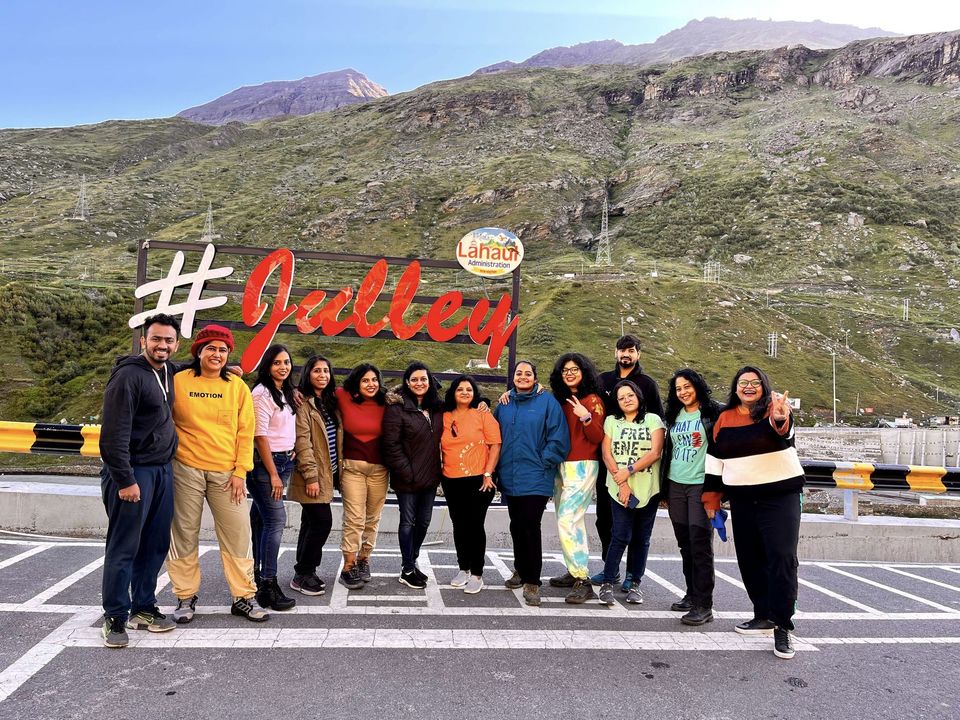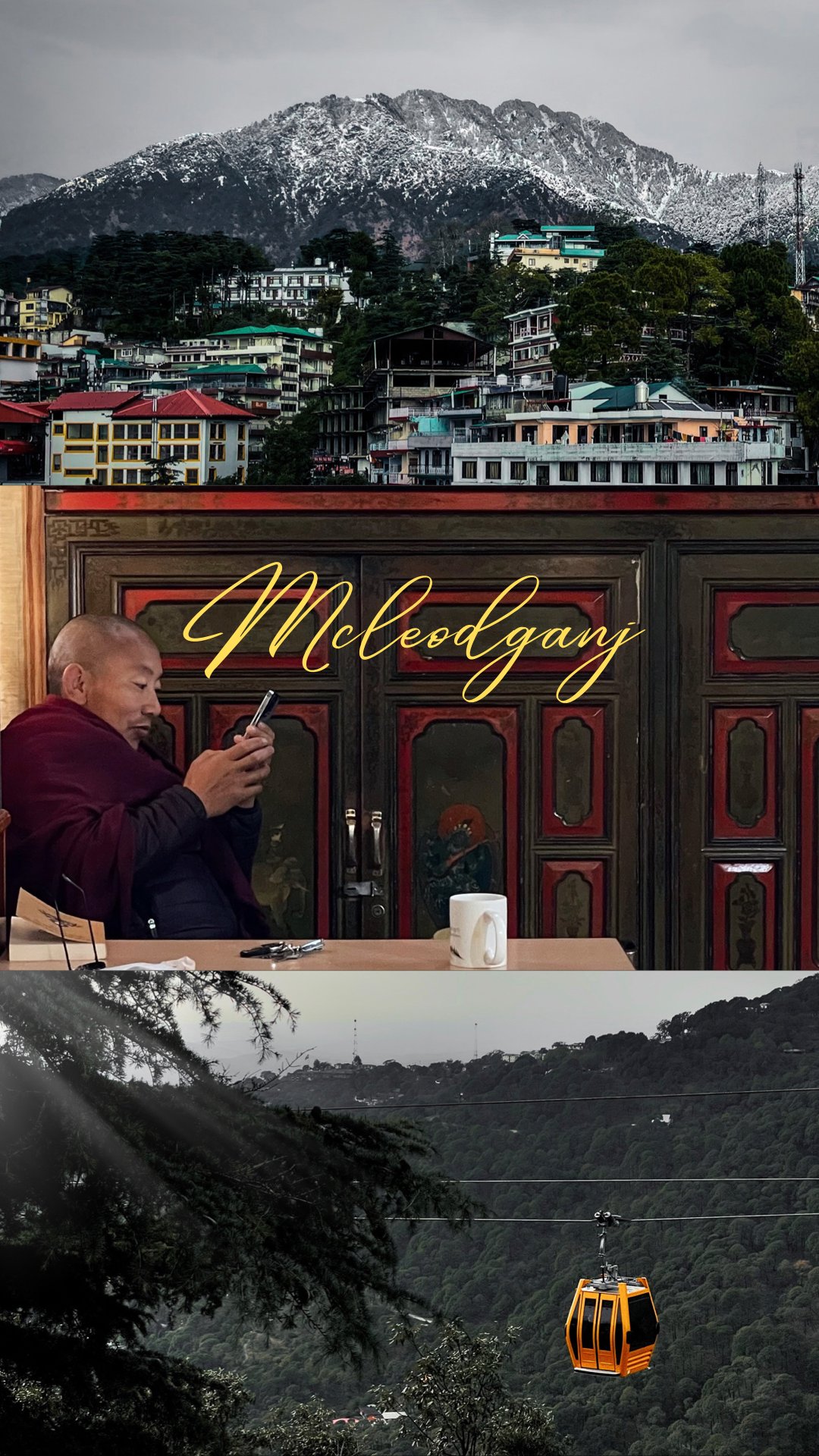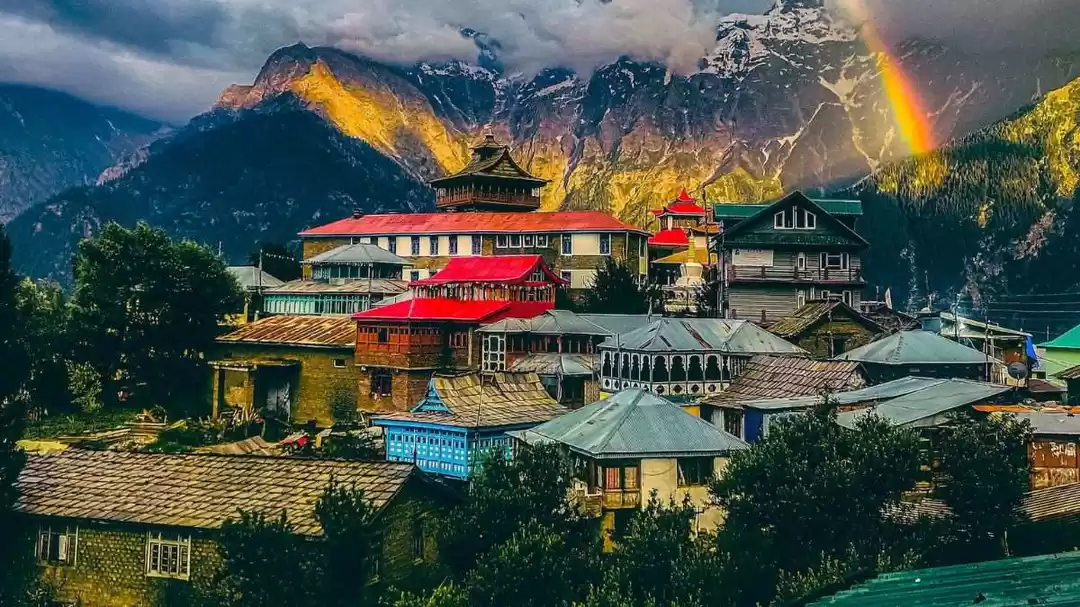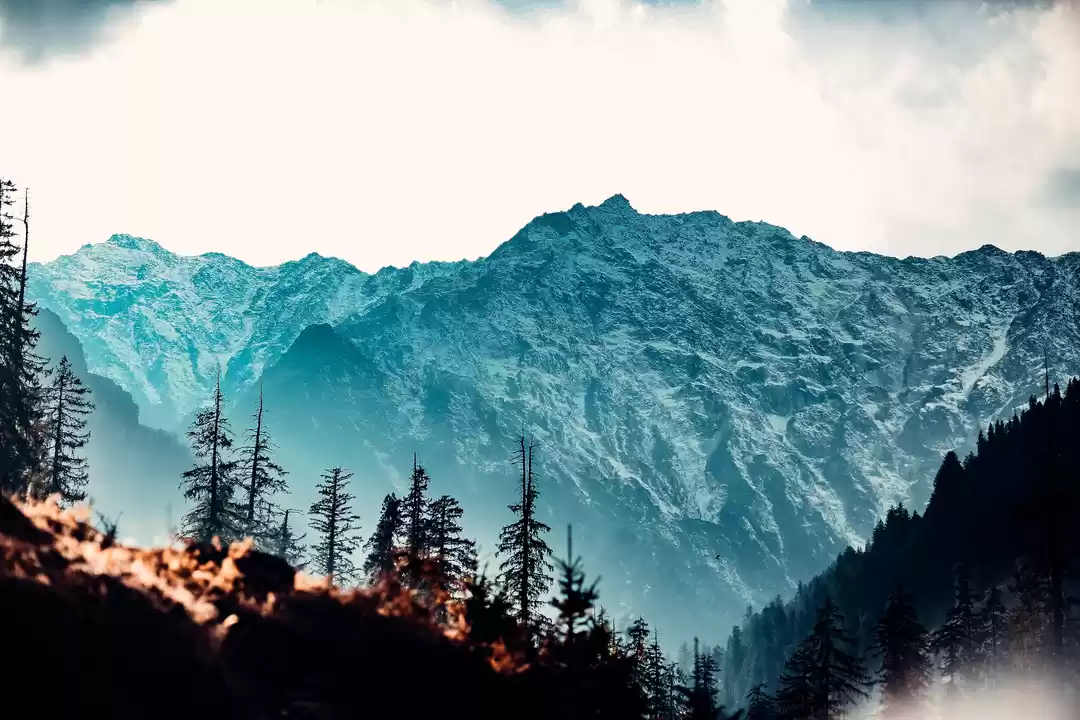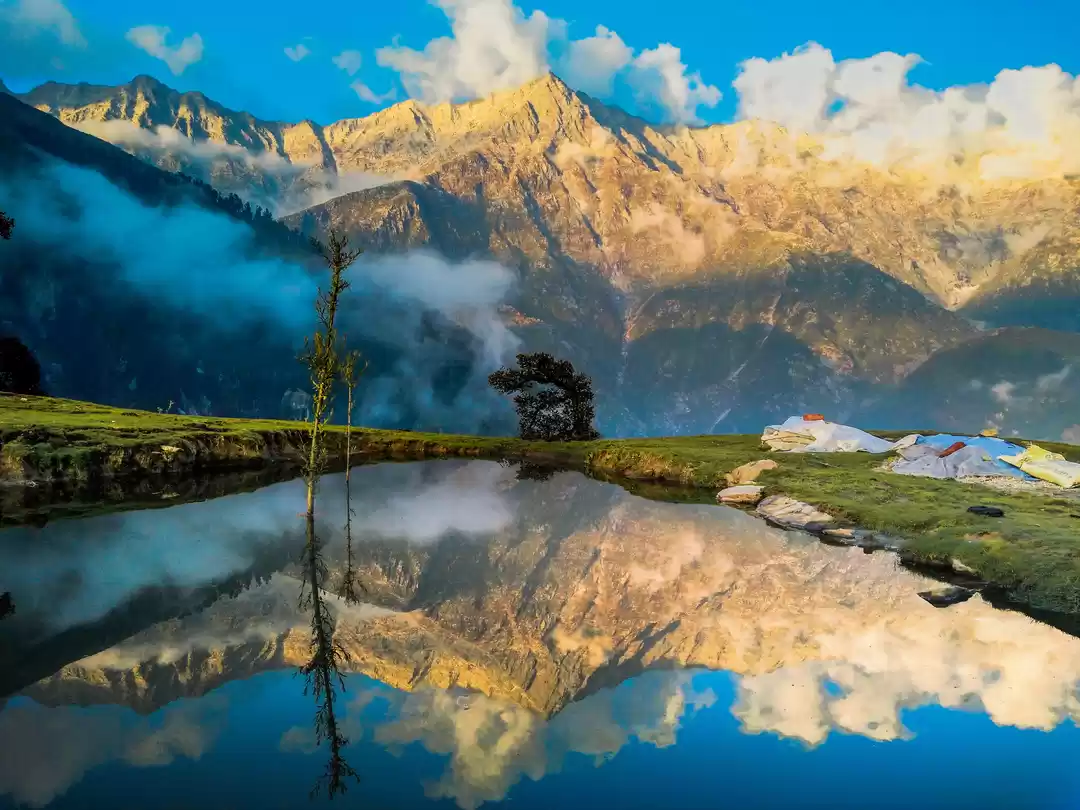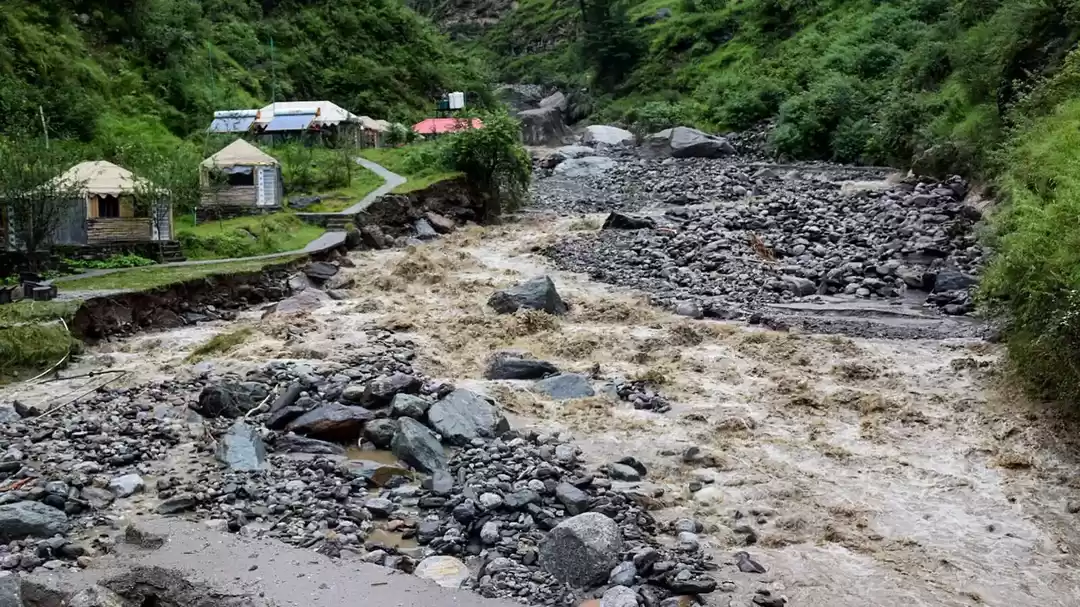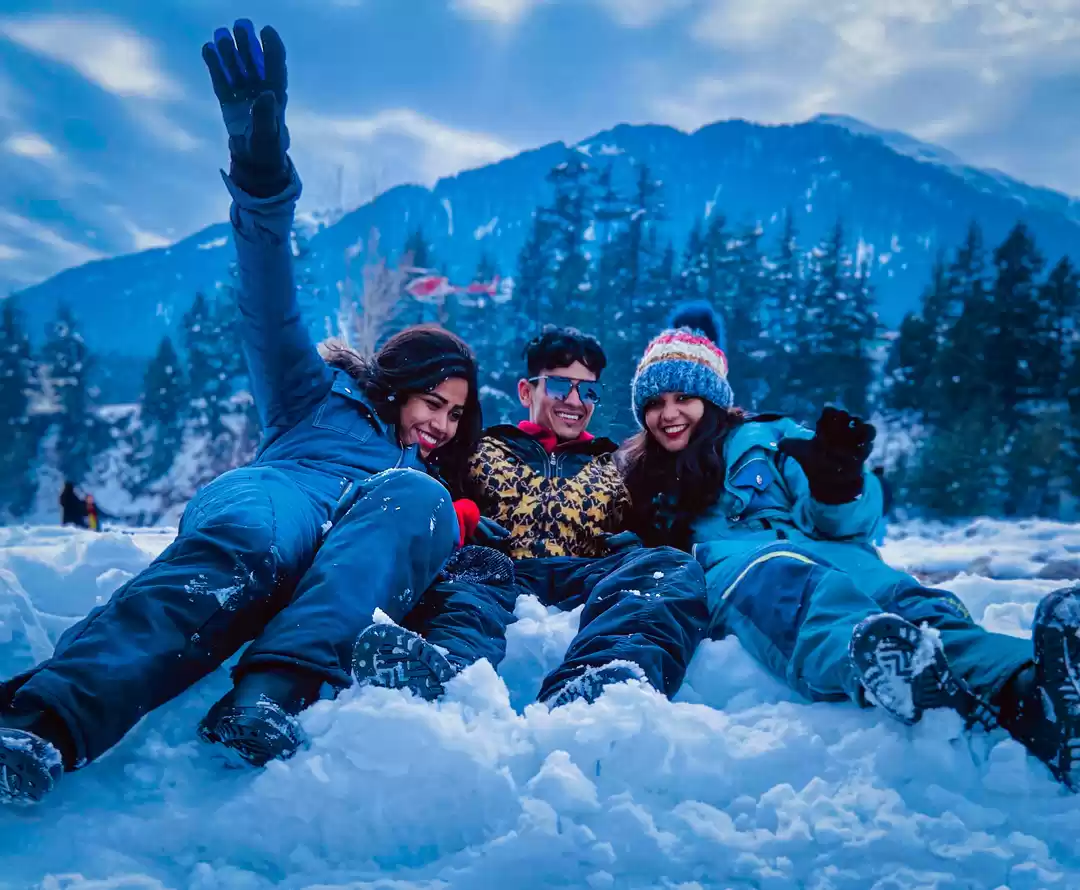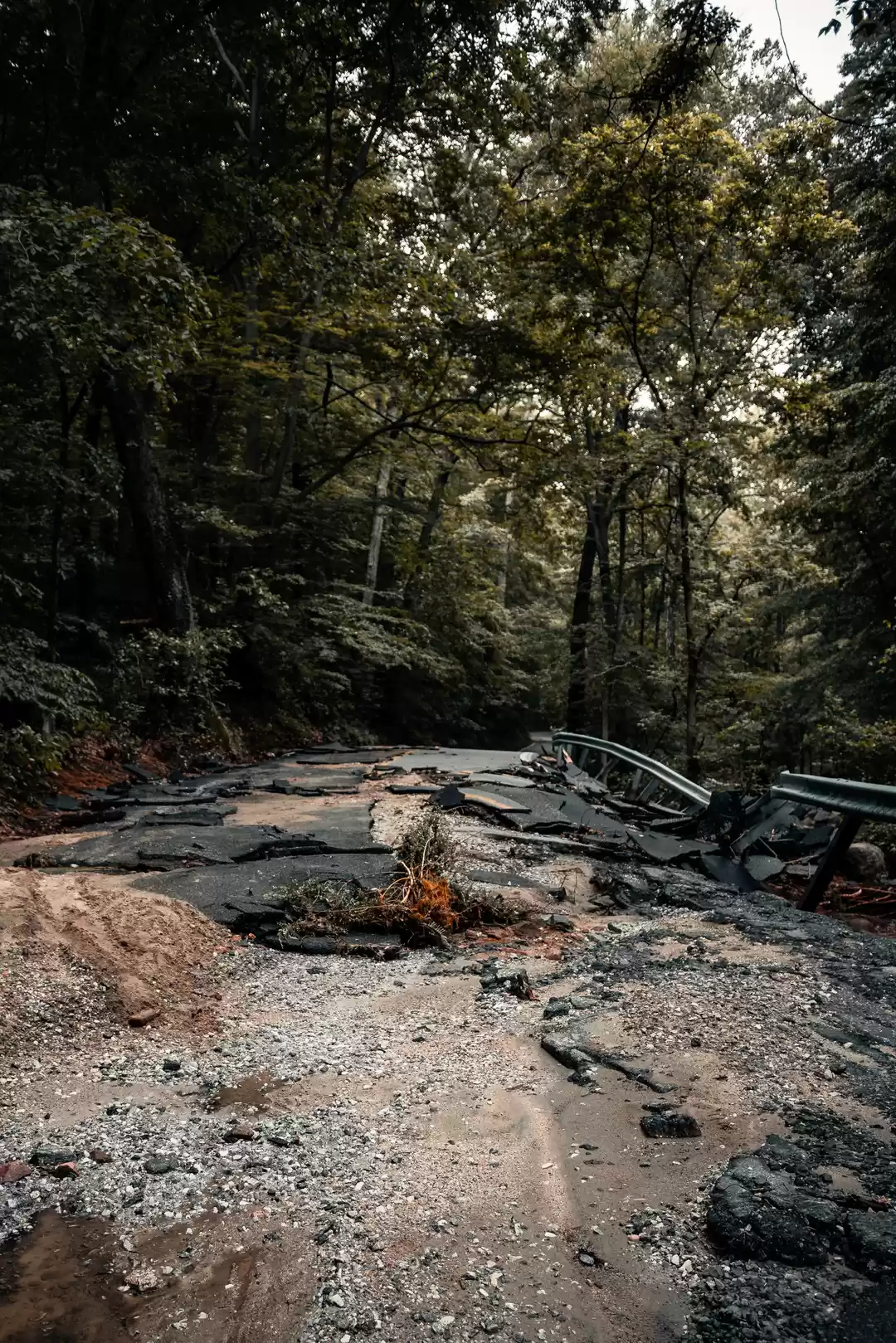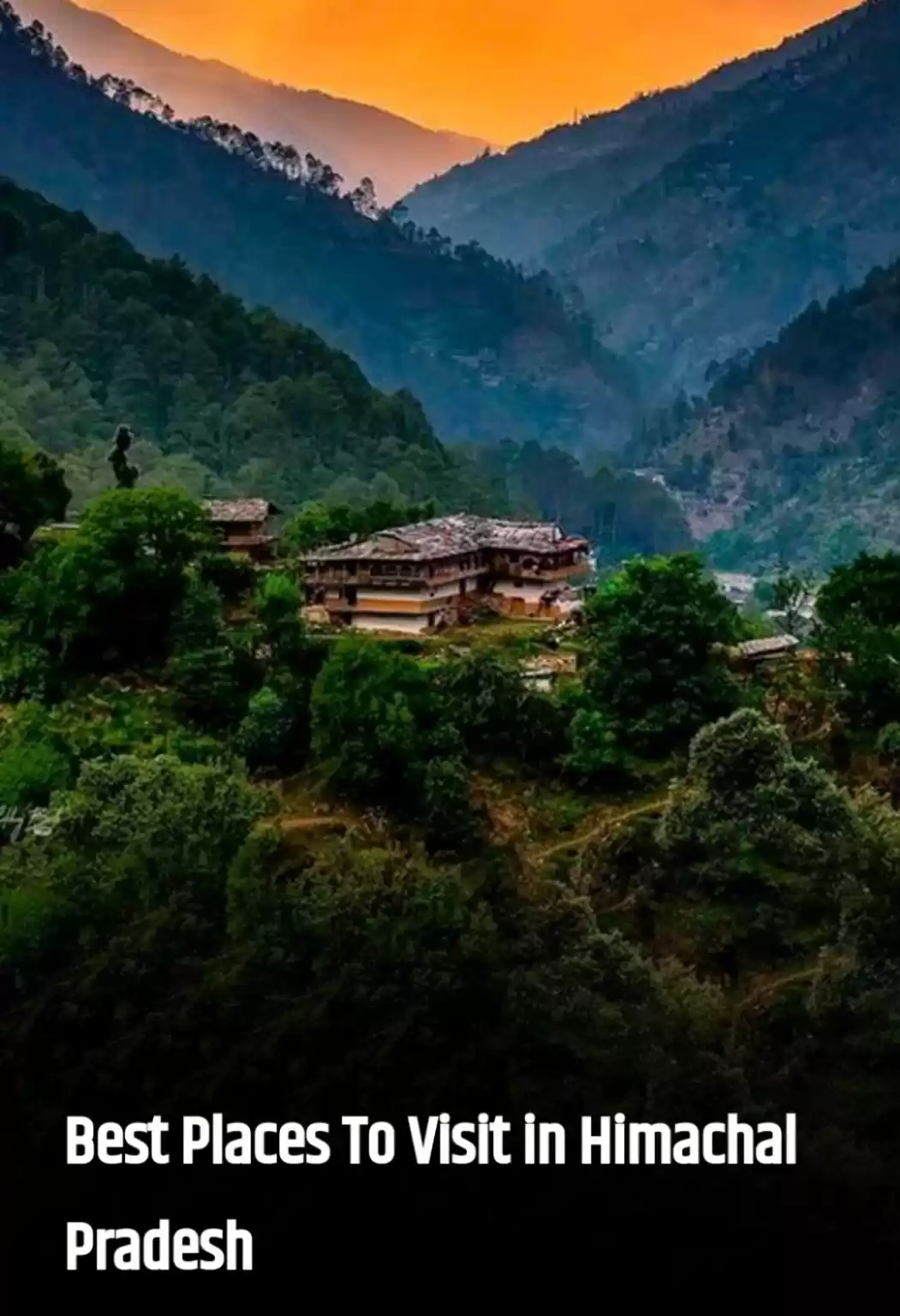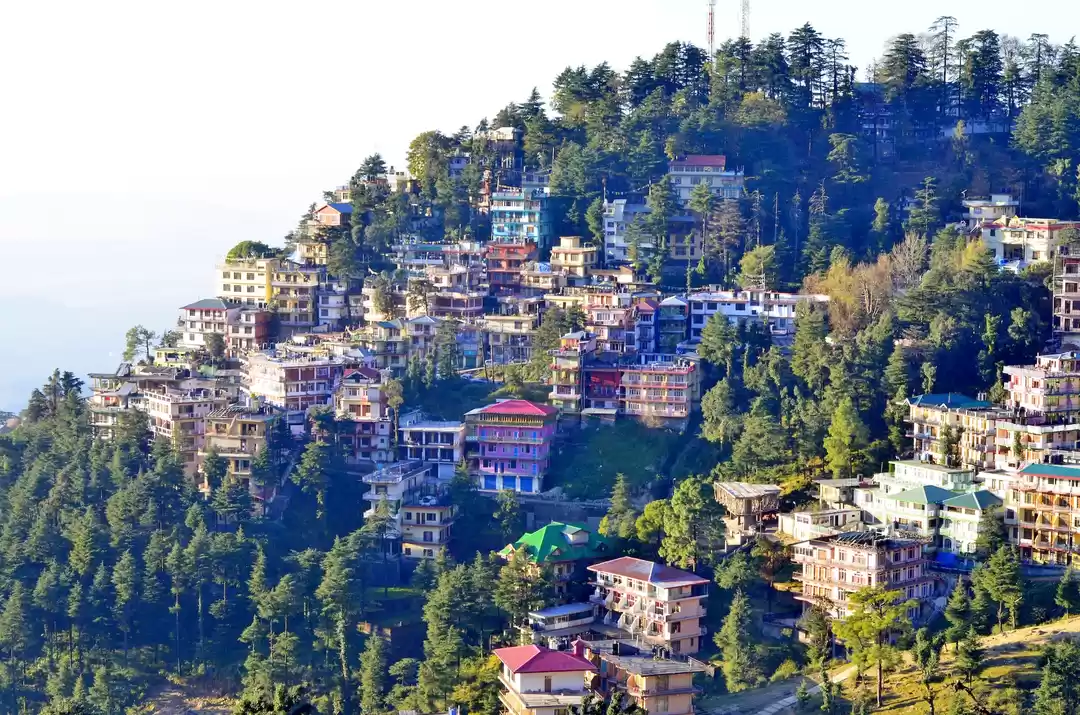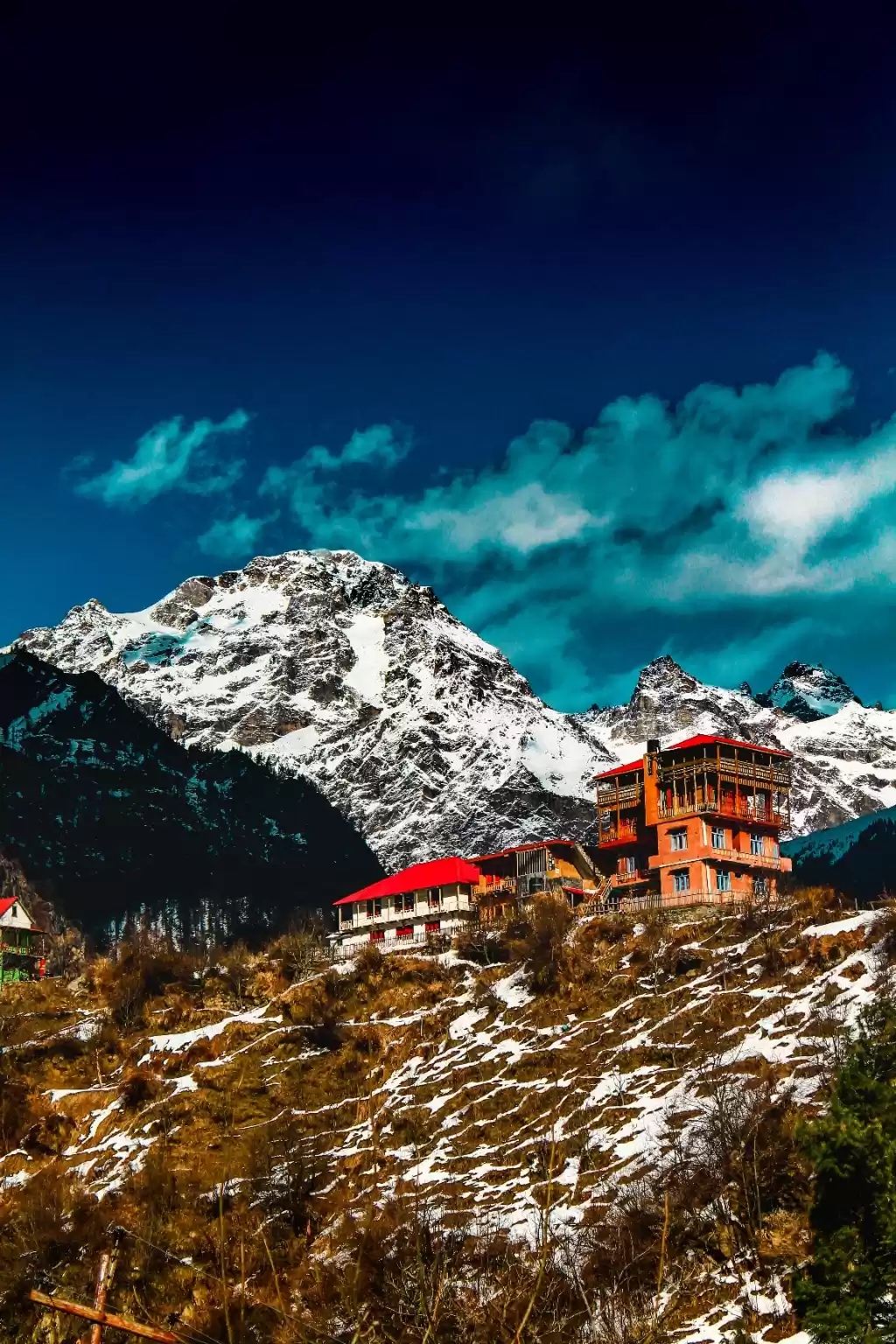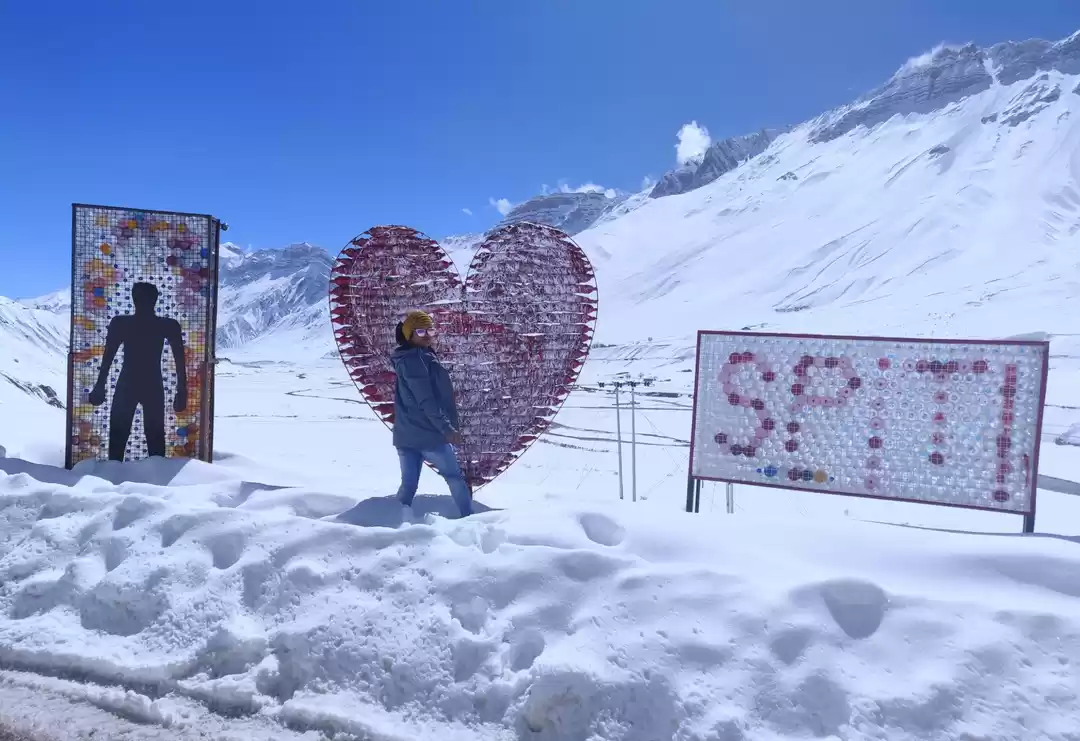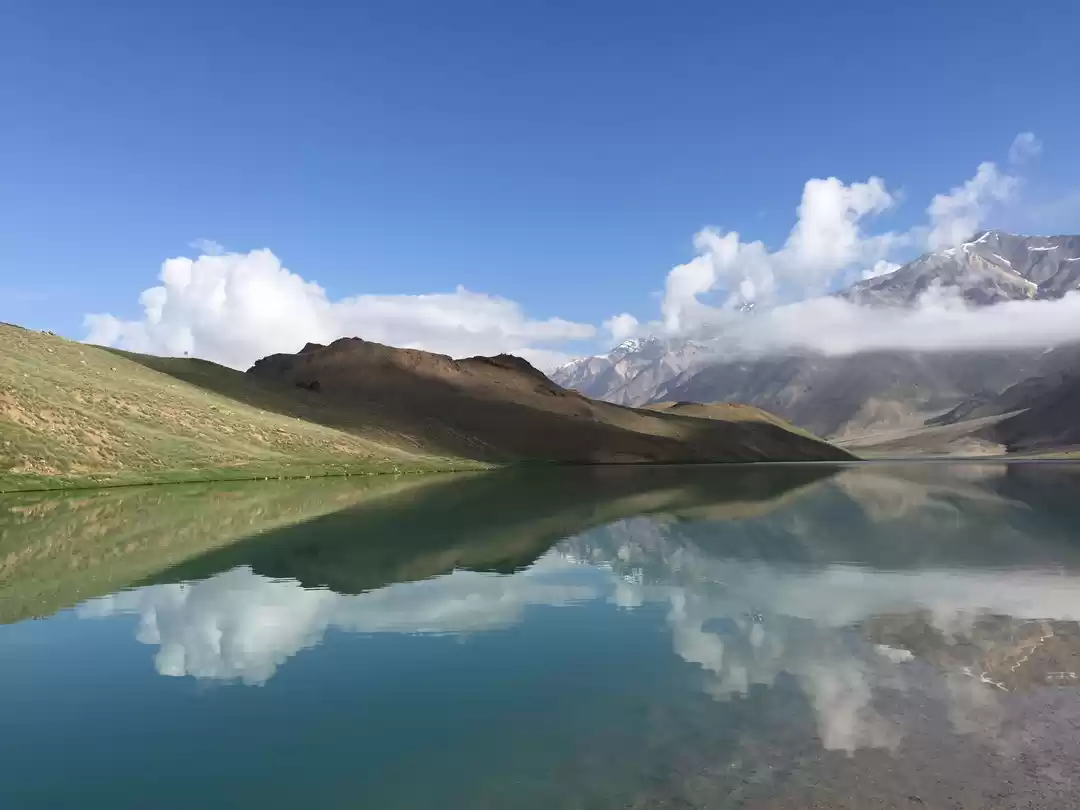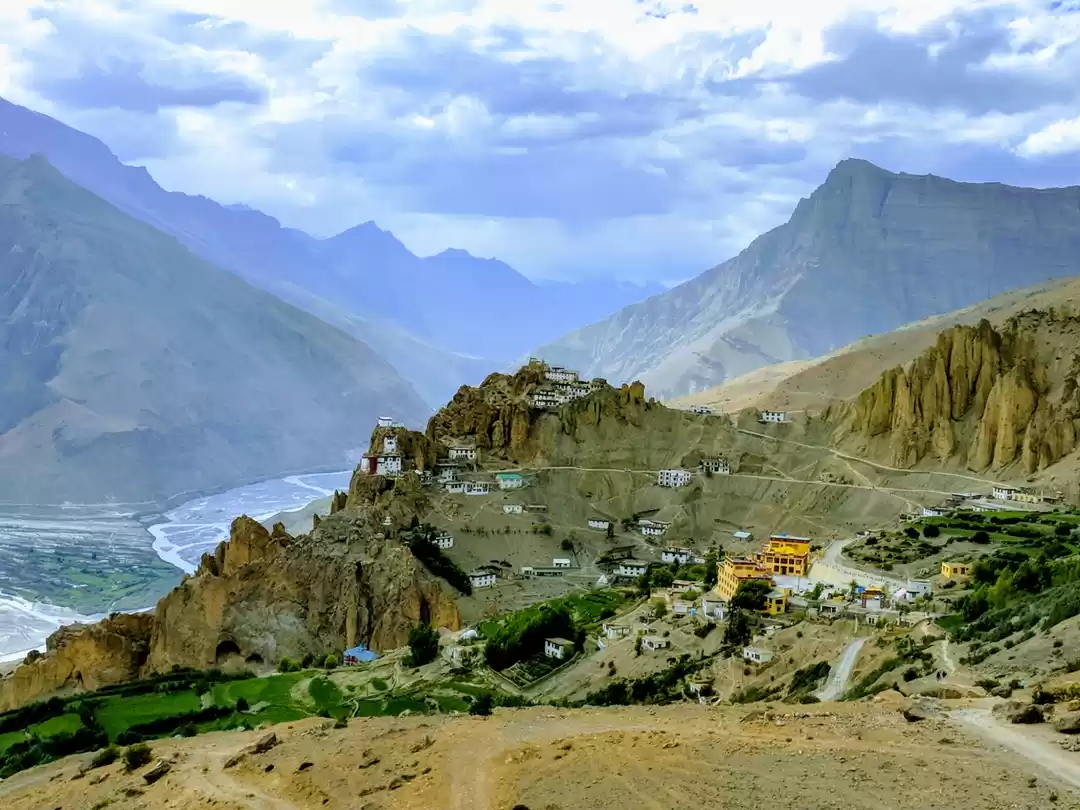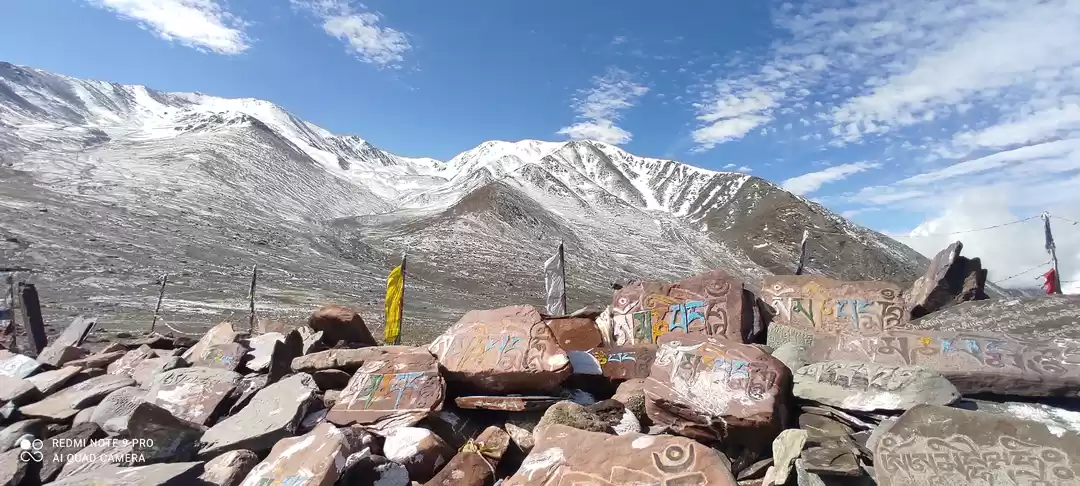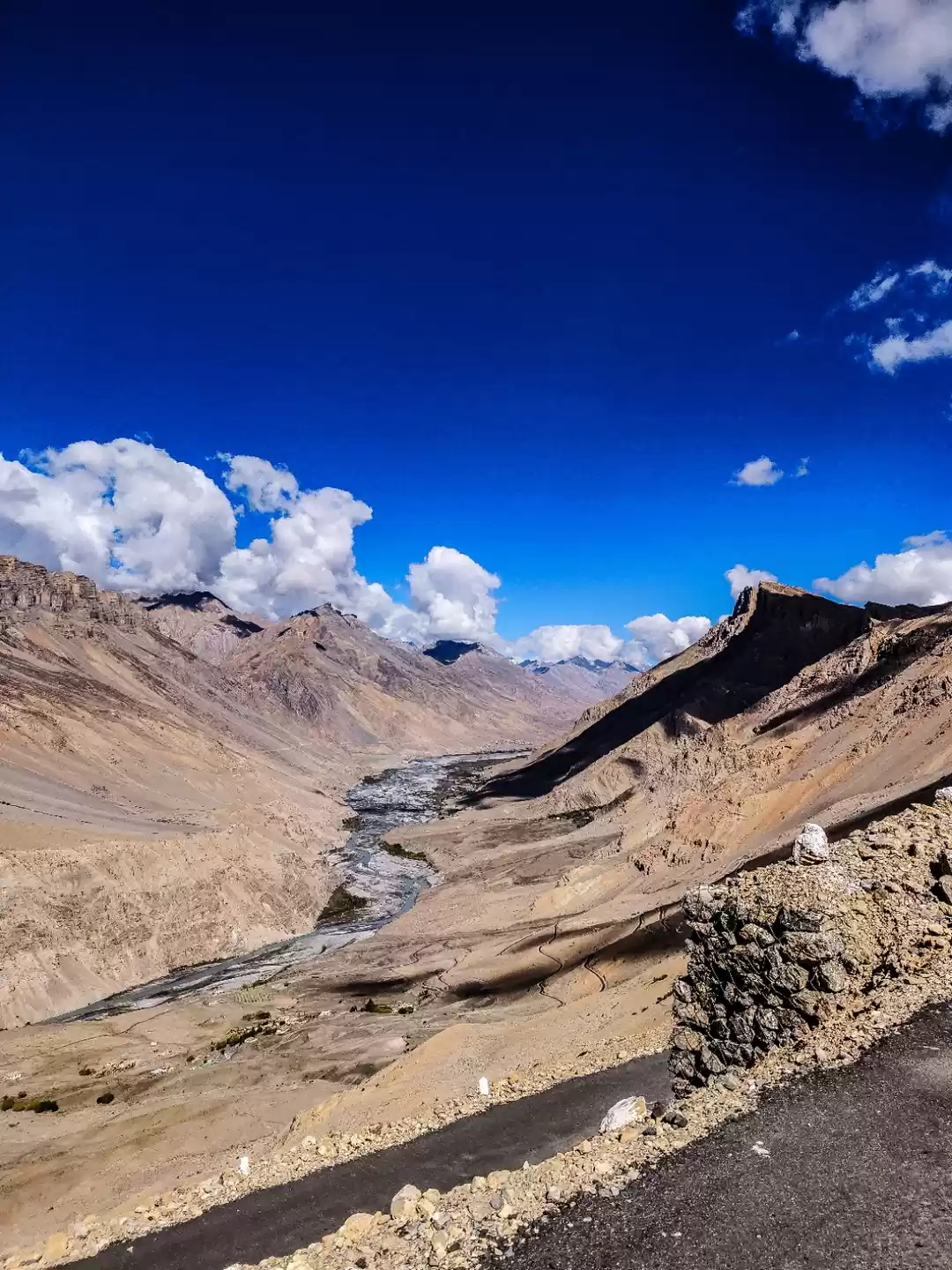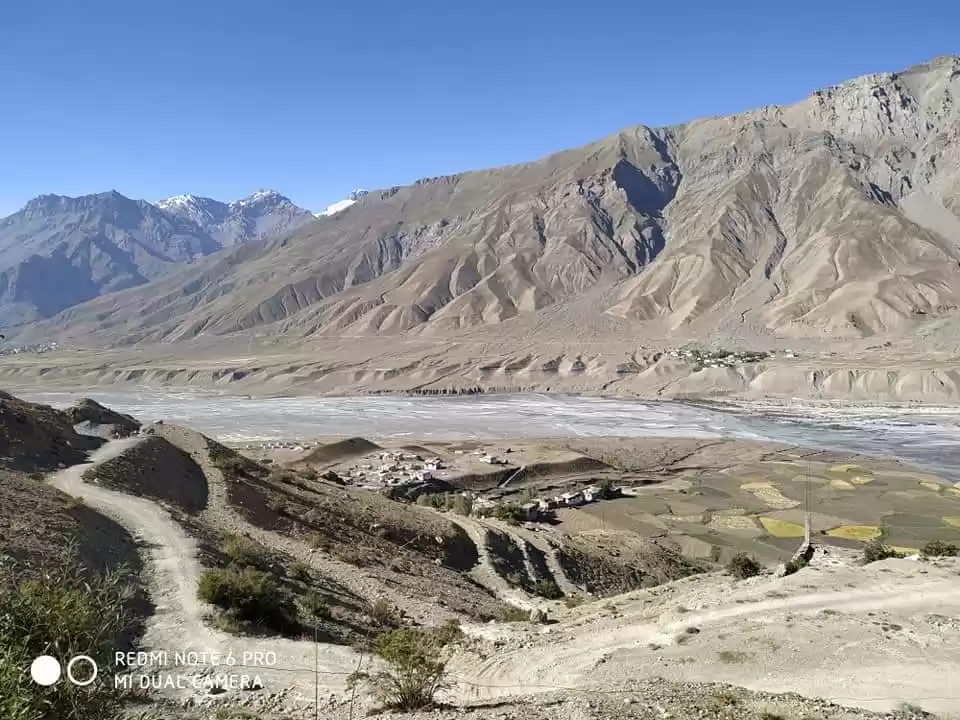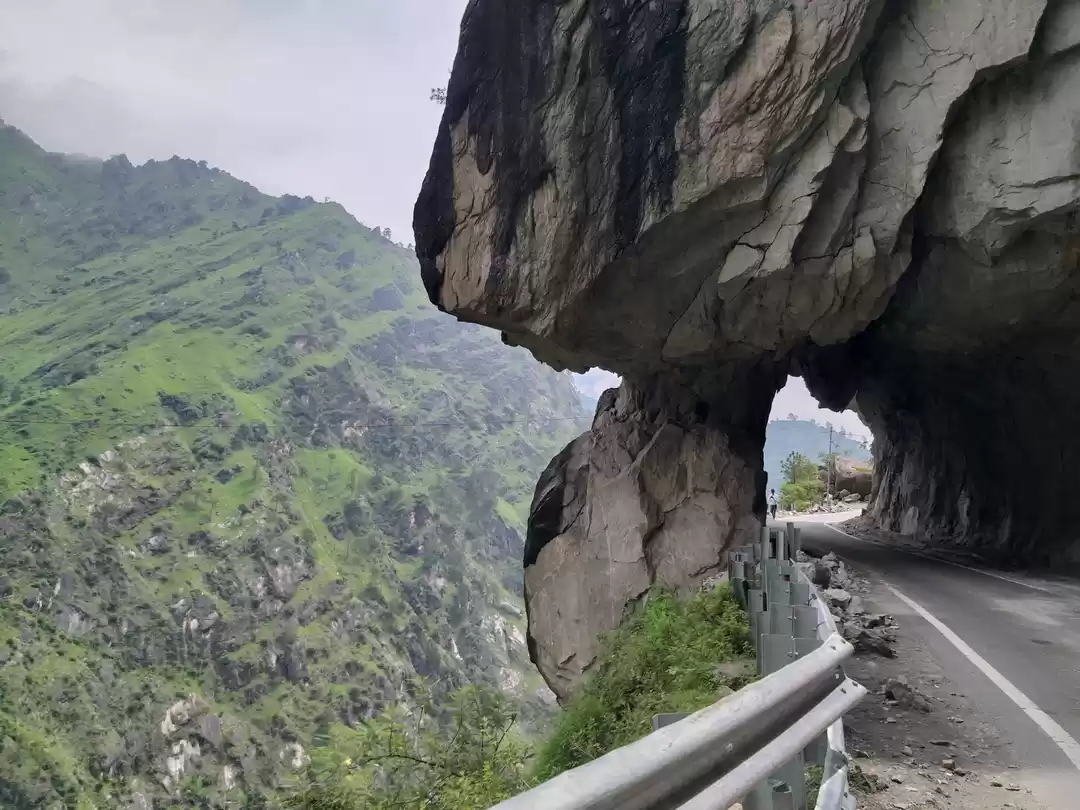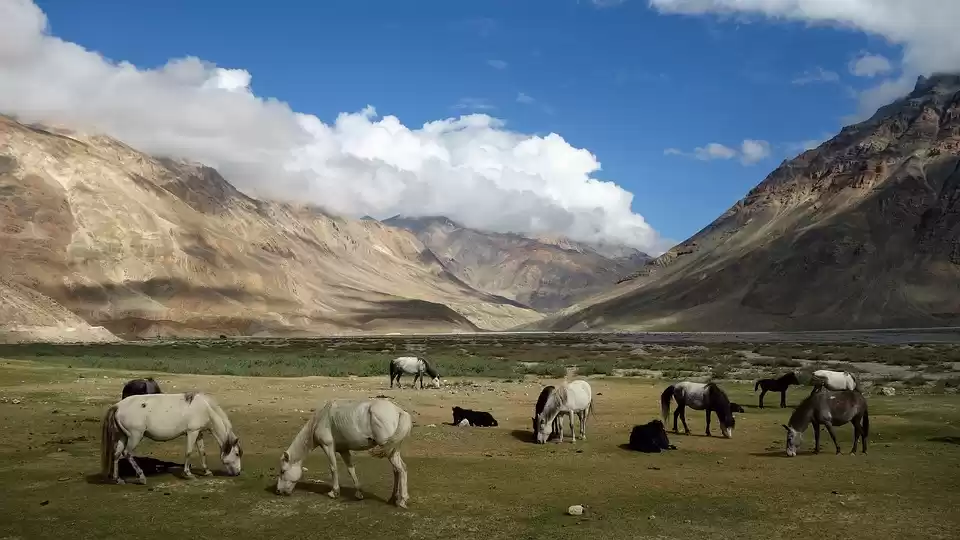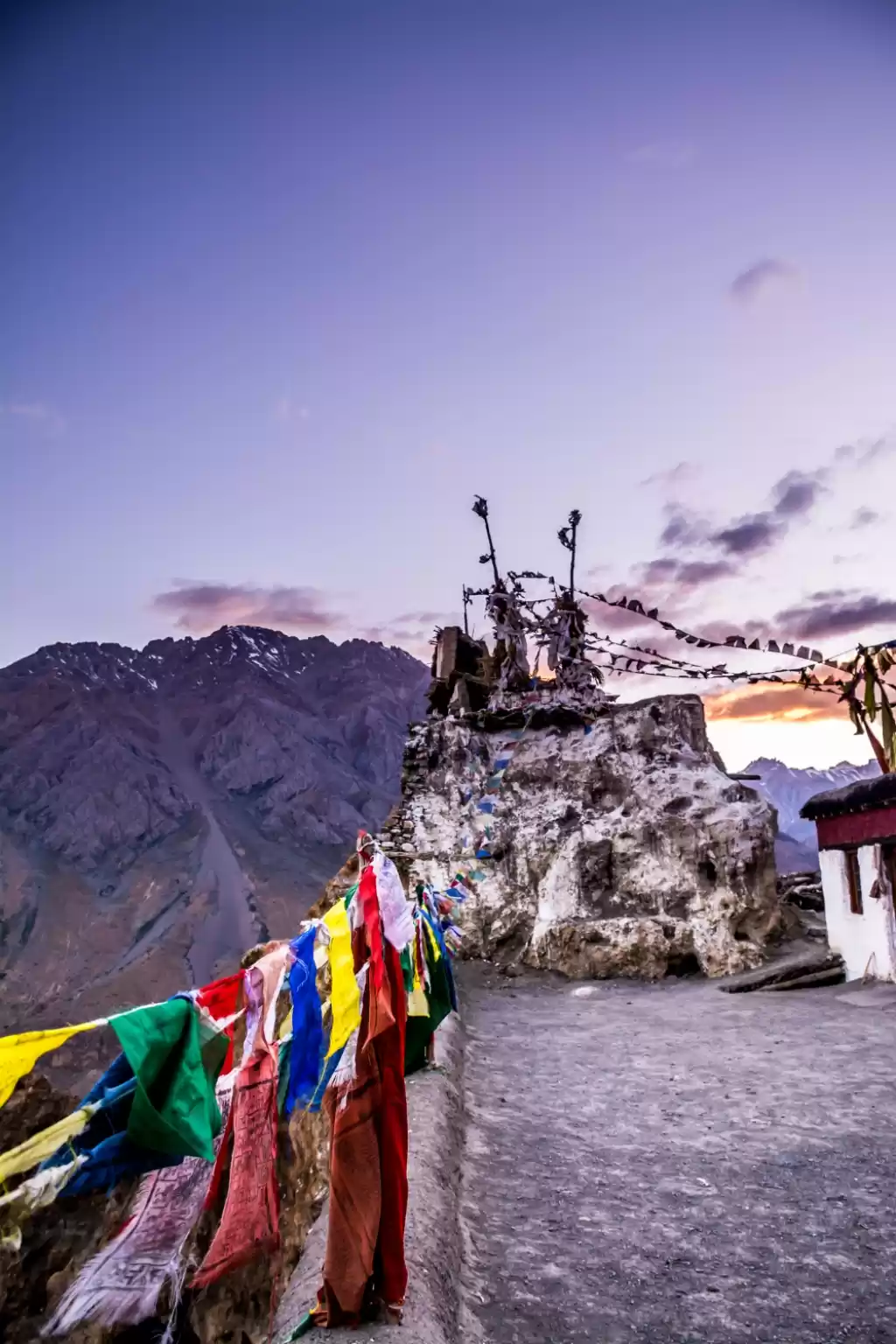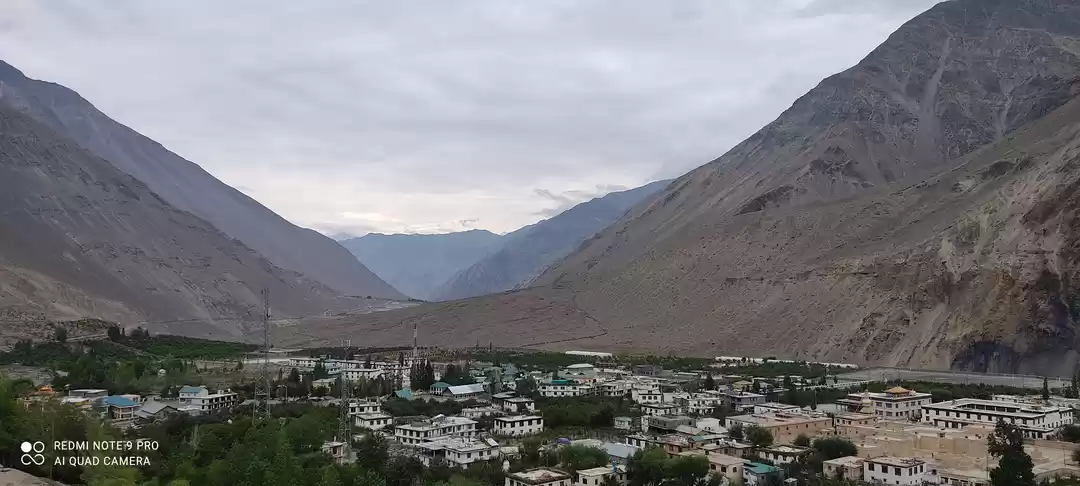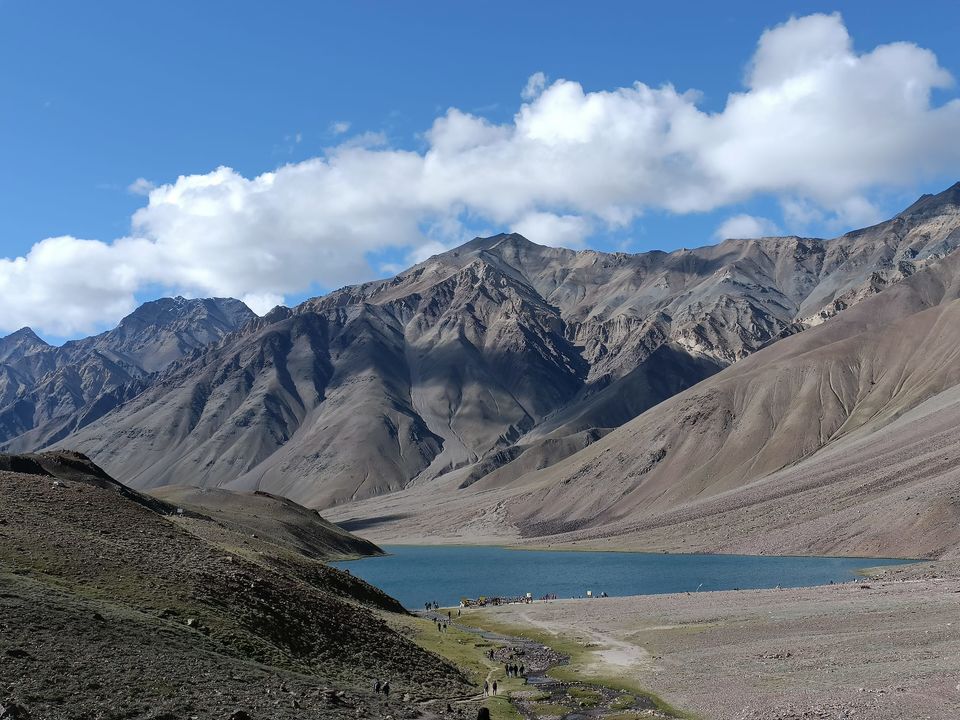
When I had zeroed in on Spiti as my next travel destination, I had never imagined what was in store for me. I was hungry for a solid trip after 2 years of lukewarm travel due to the COVID fiasco and didn't even pay heed to the risk of landslides in the monsoons when I said "yes" to this trip to the "Middle Land" (that's what "Spiti" literally translates to, being located between the Indian peninsular region and Tibet). So, I joined a group of 13 equally travel-crazy people to this other-worldly paradise called Spiti.
Day 1: Manali
Our trip began in Delhi, and we boarded a Volvo to Manali. Though we faced a 2-hour traffic jam at Mandi, we were not complaining when we reached Manali, owing to the cool weather it welcomed us with.
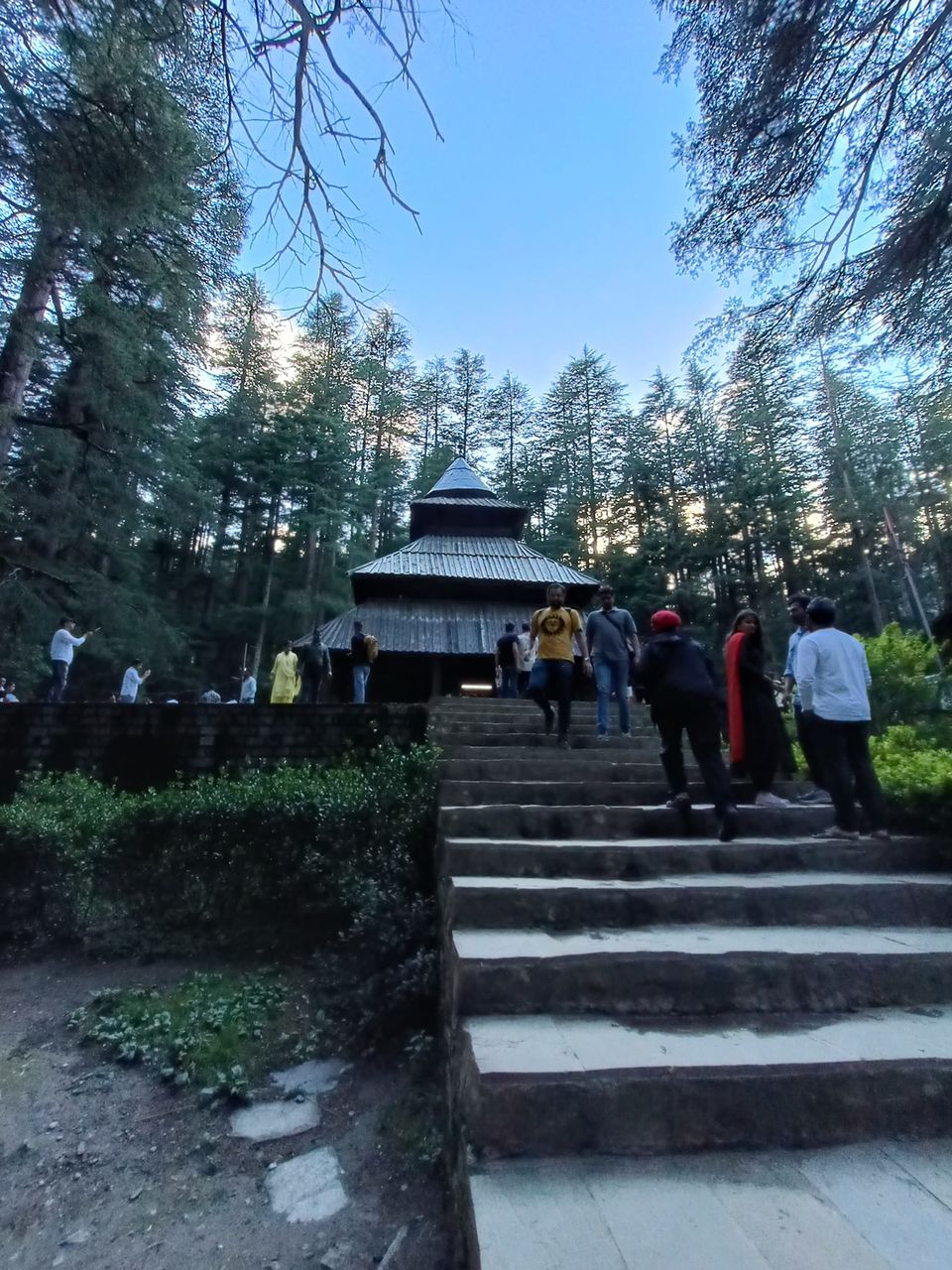
The rest of the day was spent hopping around Old Manali, enjoying the gushing Beas and chit-chatting with the other members of the group. We had a sumptuous dinner at Atrangiz Cafe, a beautifully decked cafe overlooking the Beas.
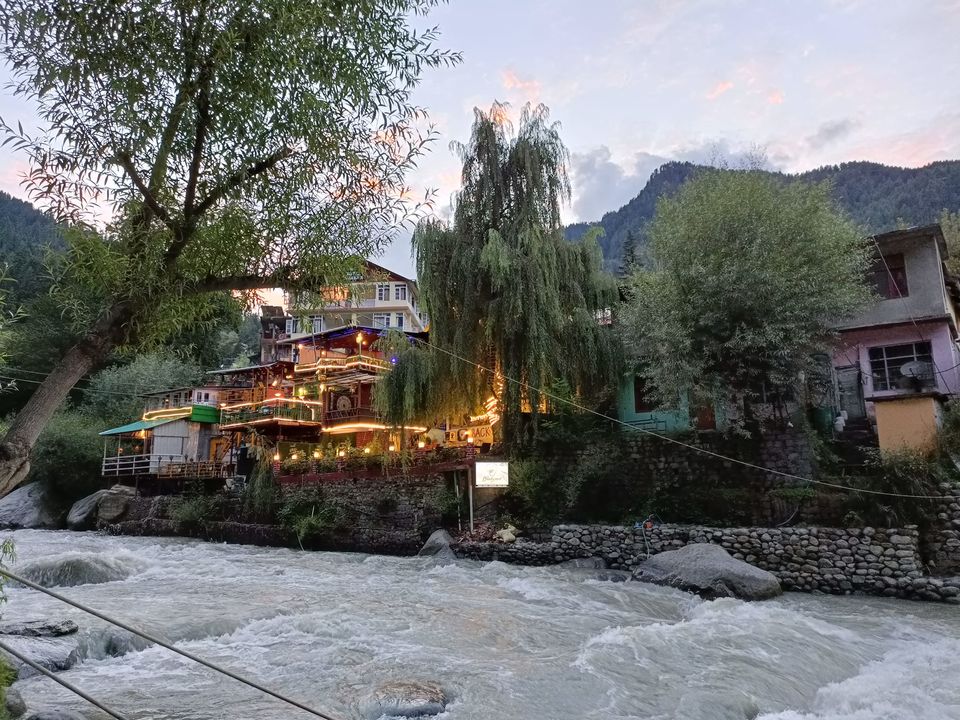
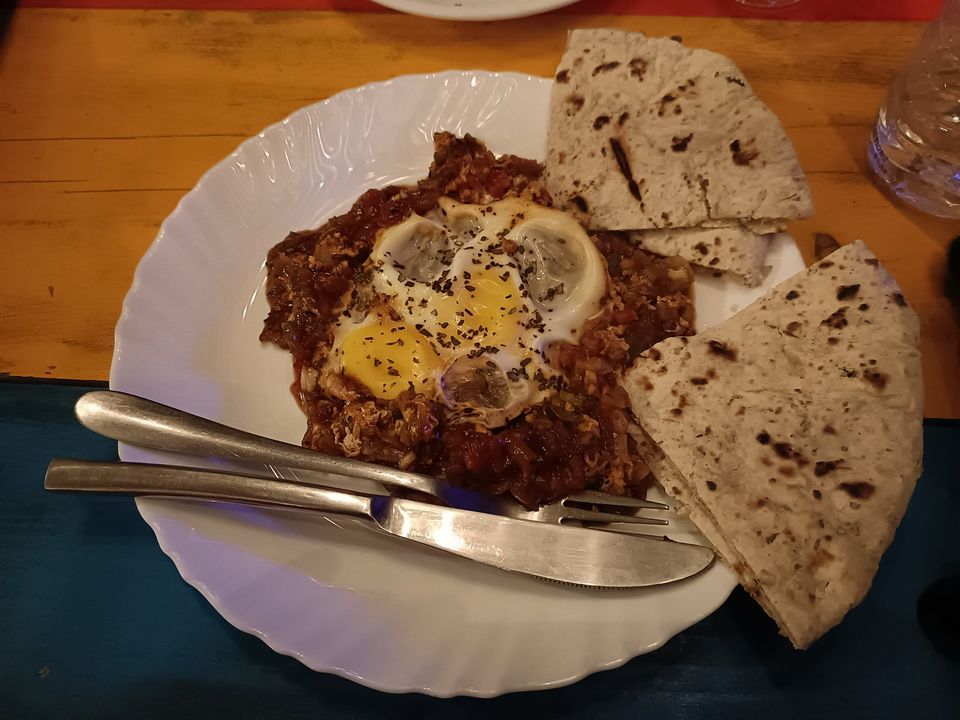
Day 2: Manali to Kaza
The next day, we left early for Kaza. We crossed the legendary Atal Tunnel, touted as the longest highway tunnel above 10,000 ft., and also visited Kunzum La on the way.
Our hotel in Kaza, Hotel Deyzor, with its beautifully crafted and decorated interiors, deserves to be called a mini tourist destination. I will remember this place for its warm host, Karan, and his adorable St. Bernard, Azizzam.
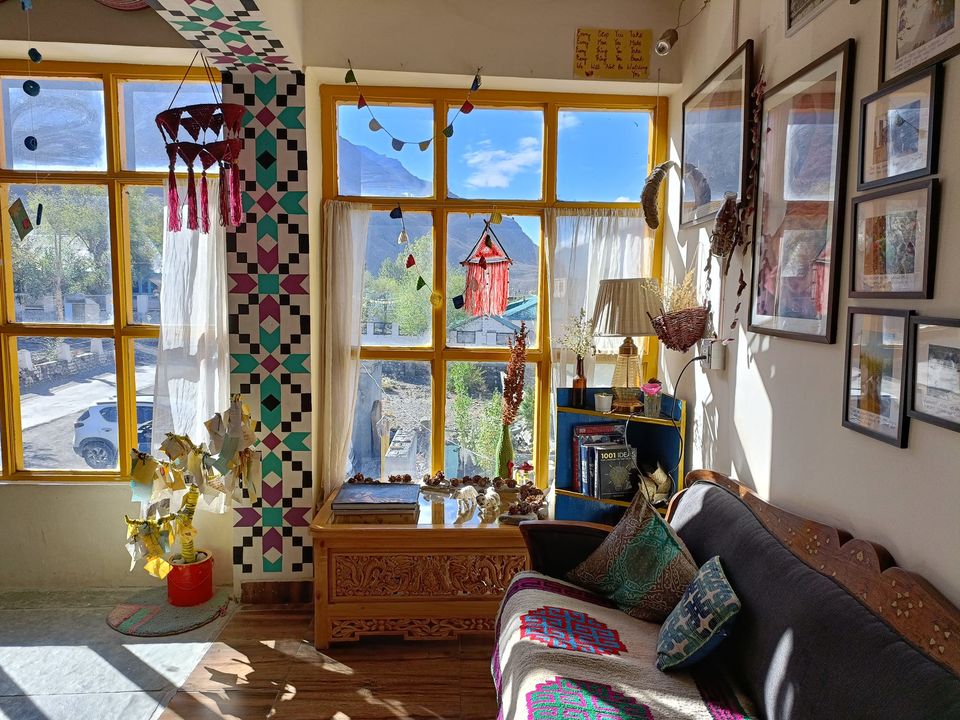

We had a quiet evening, as all of us were getting used to the altitude and the low oxygen levels (some of us recorded as low as 60%, when our vitals were checked).
Day 3: Key Monastery, Chicham, and Kibber
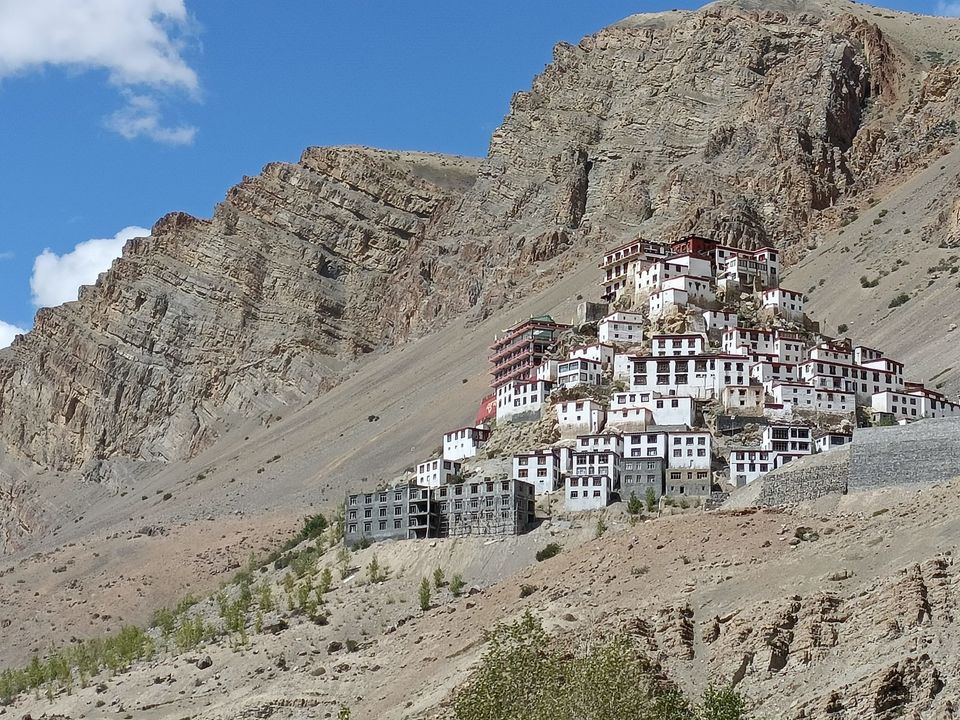

The following day, we headed towards the iconic Key Monastery. The place had jaw-dropping views and isolated meditation rooms/chambers that were well-equipped with cushions and fans. After having the tea that was served by the monks, we headed towards our next destination, the Chicham Bridge.
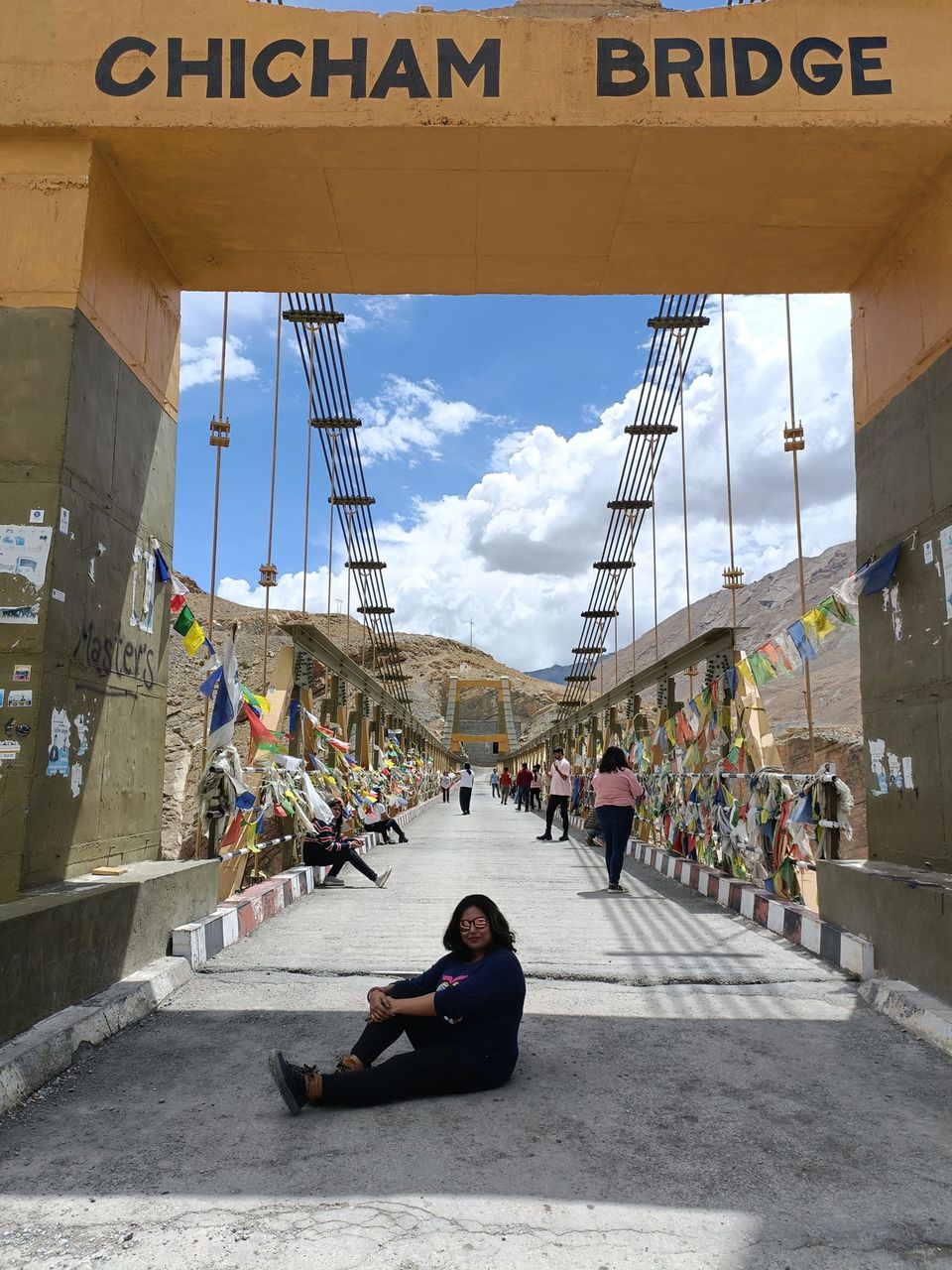
Known as the highest suspension bridge in Asia, the Chicham, which stands at a height of over 13,000 ft., connects the villages of Chicham and Kibber. The bridge didn't fail to astonish us. We broke into a little dance there and clicked tons of pictures.
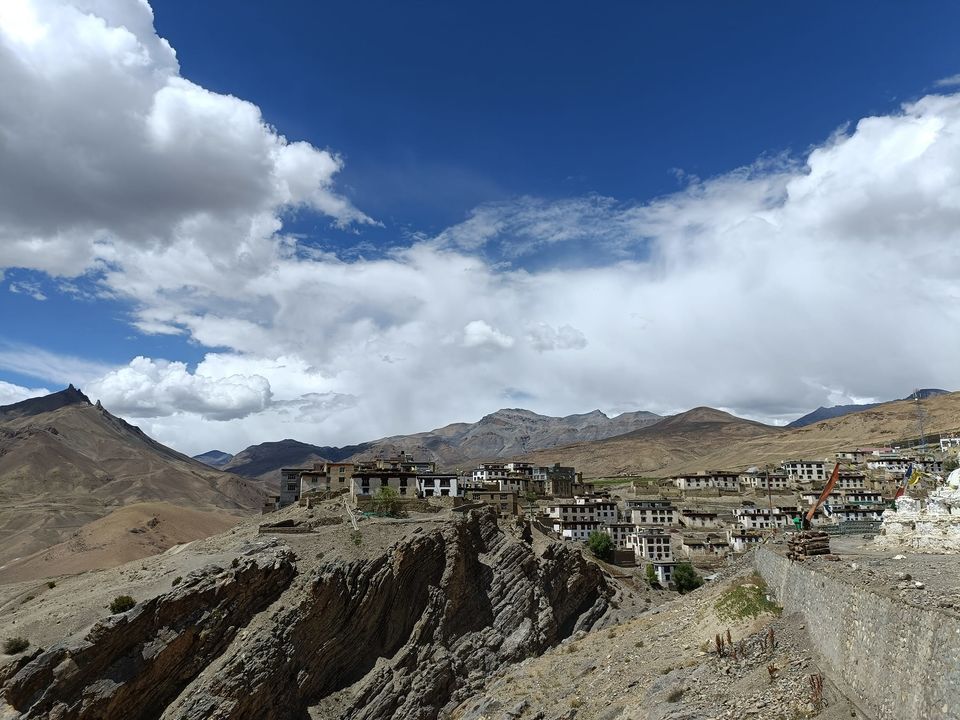
This was followed by a visit to Kibber, after which we had an early dinner and prepared ourselves for the next day, which was going to be more eventful.
Day 4: The Gue Mummy and Tabo Monastery
We travelled through a gorgeously scenic route the following day and even stopped at unnamed spots for photo ops.
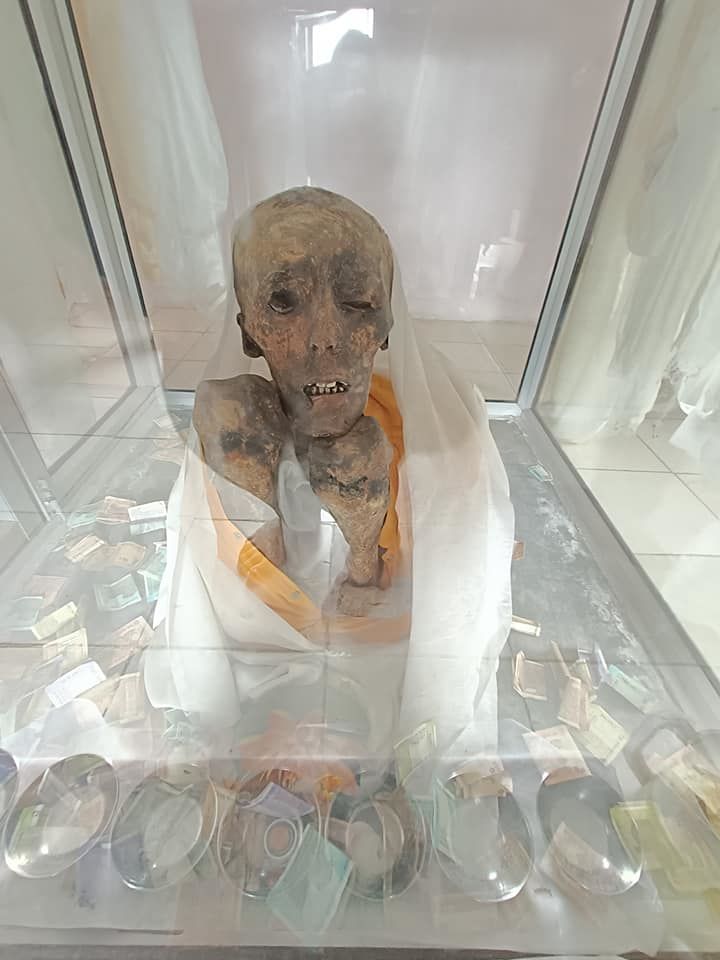
We then visited the Gue Mummy, which is over 500 years old and the only known naturally preserved mummy in India, as opposed to the chemically preserved mummies of Egypt. It is believed the mummy is that of a monk named Shangha Tenzin, who had apparently sacrificed himself due to a curse that threatened to ruin his town, and had thus started the mummification process while alive by starving himself.
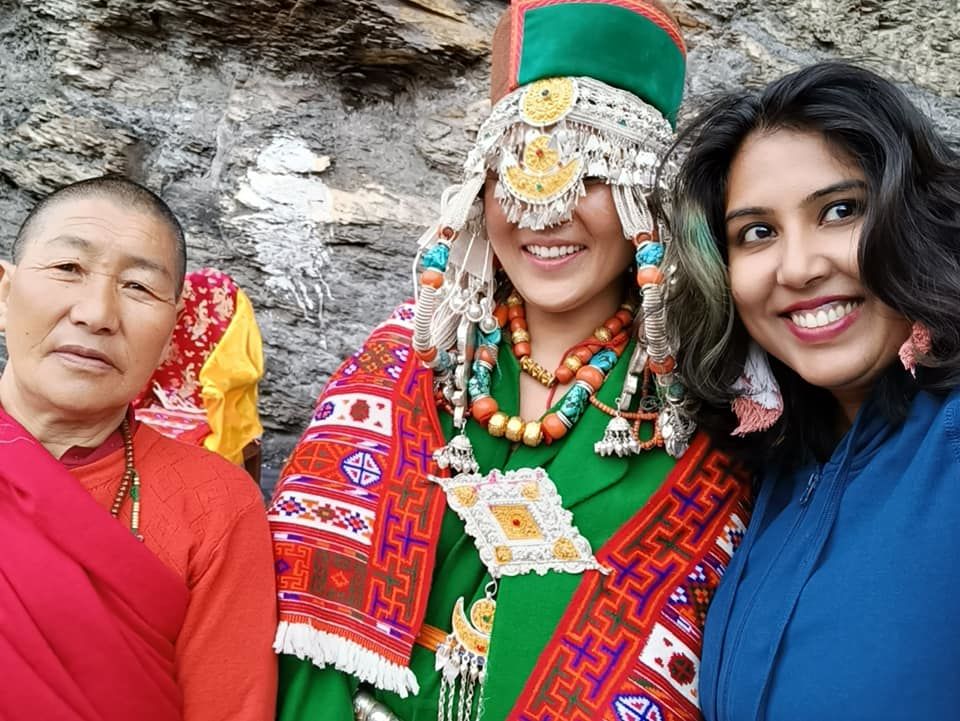
We also had a bonus chance encounter with a Spitian bride and her family, who were waiting by the road. We stopped our tempo traveller immediately and greeted them. We had a little song-and-dance session with them too.

The last destination for the day was Tabo, an ancient cave monastery known as the Ajanta of the Himalayas. Tabo has amazingly beautiful interiors, adorned with ancient cave paintings. The interiors of the cave are lit only by natural light (through narrow openings on the roof), and we were provided with torches to view the paintings, as it gets tremendously dark inside.
We reached Dhankar by late evening, and it had started to rain by then.
Day 5: Dhankar Fort, Dhankar Monastery, Langza, and Hikkim
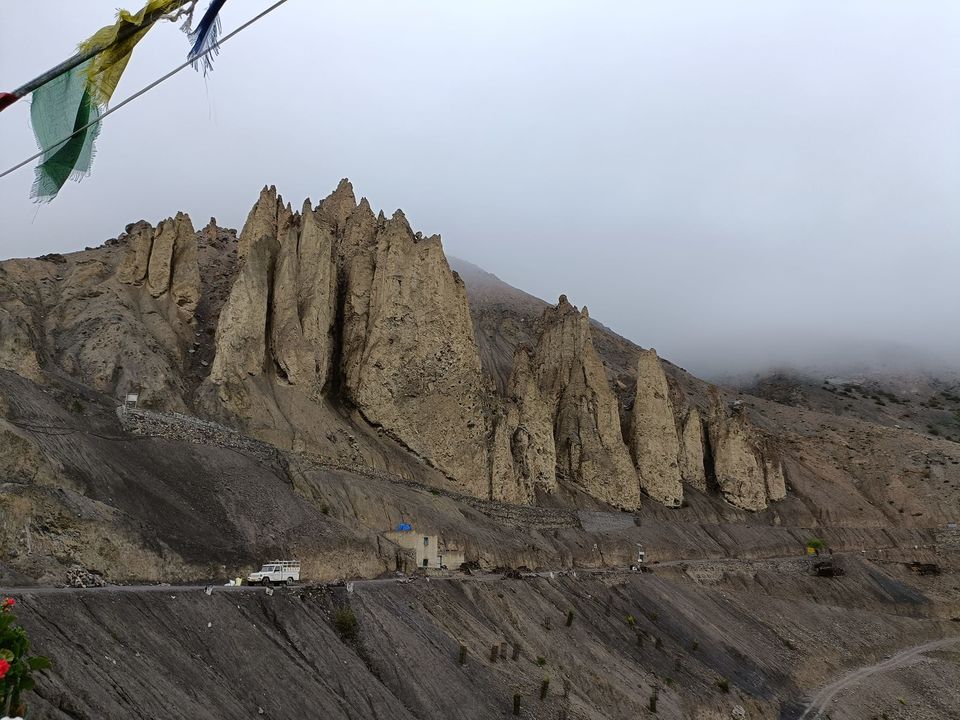
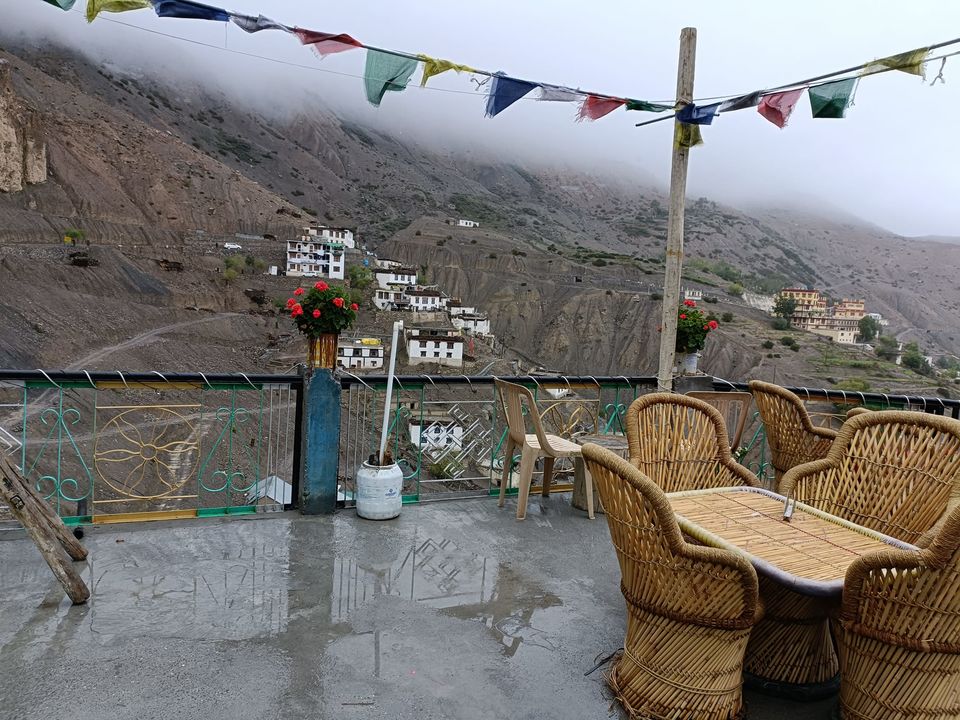
The following day, our Dhankar Lake trek was cancelled due to the path being slippery because of the rains the previous day. However, we did have an adventurous trek to the Dhankar fort and the Dhankar monastery through the village.
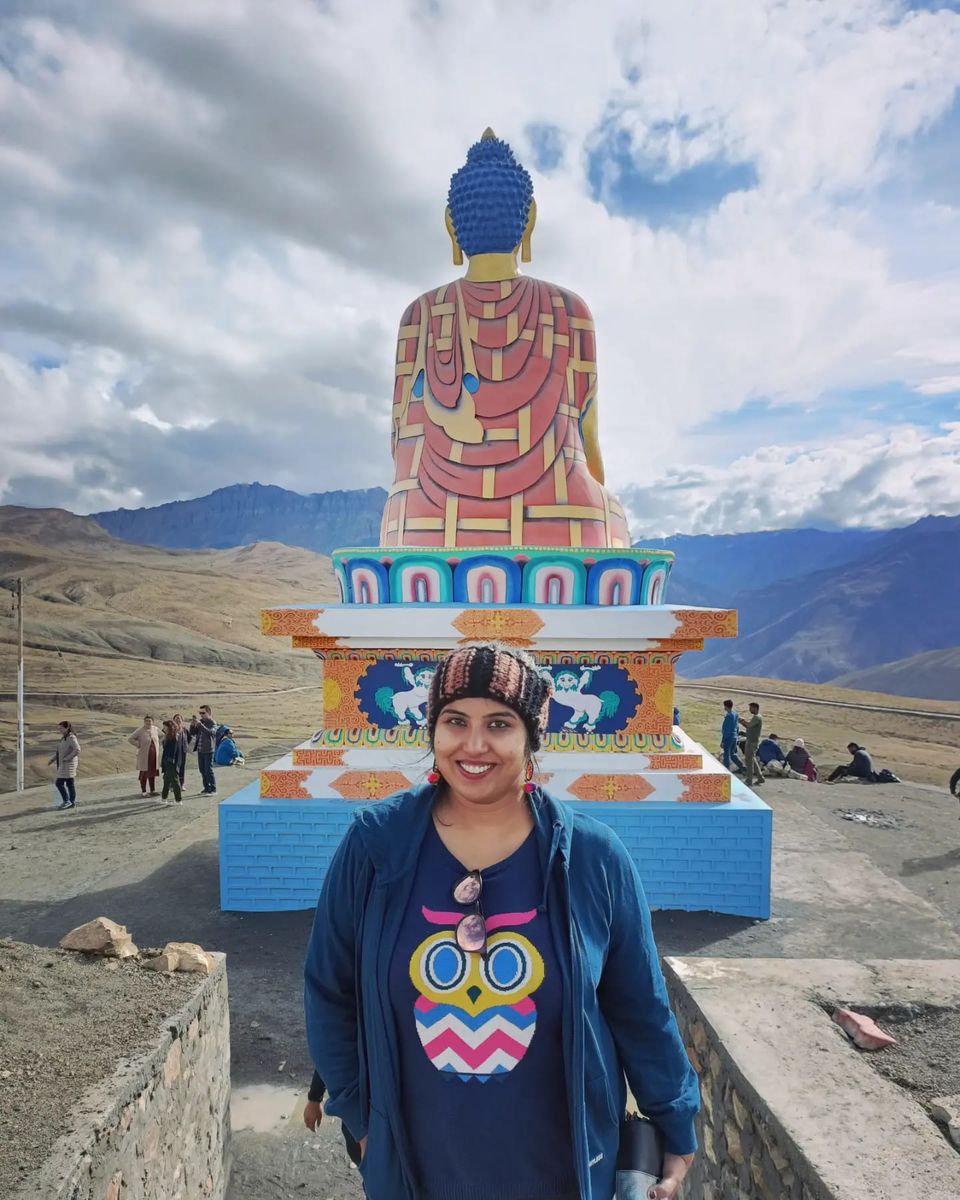
Our next destination was Langza, the fossil village of Spiti, where one can still find fossils of marine animals from an ancient era when this area used to be submerged beneath the Tethys Sea.
After visiting the 35 ft. Buddha statue of Langza, we headed towards Hikkim, which, situated at a height of above 14,000 ft., is the highest post office in the world.
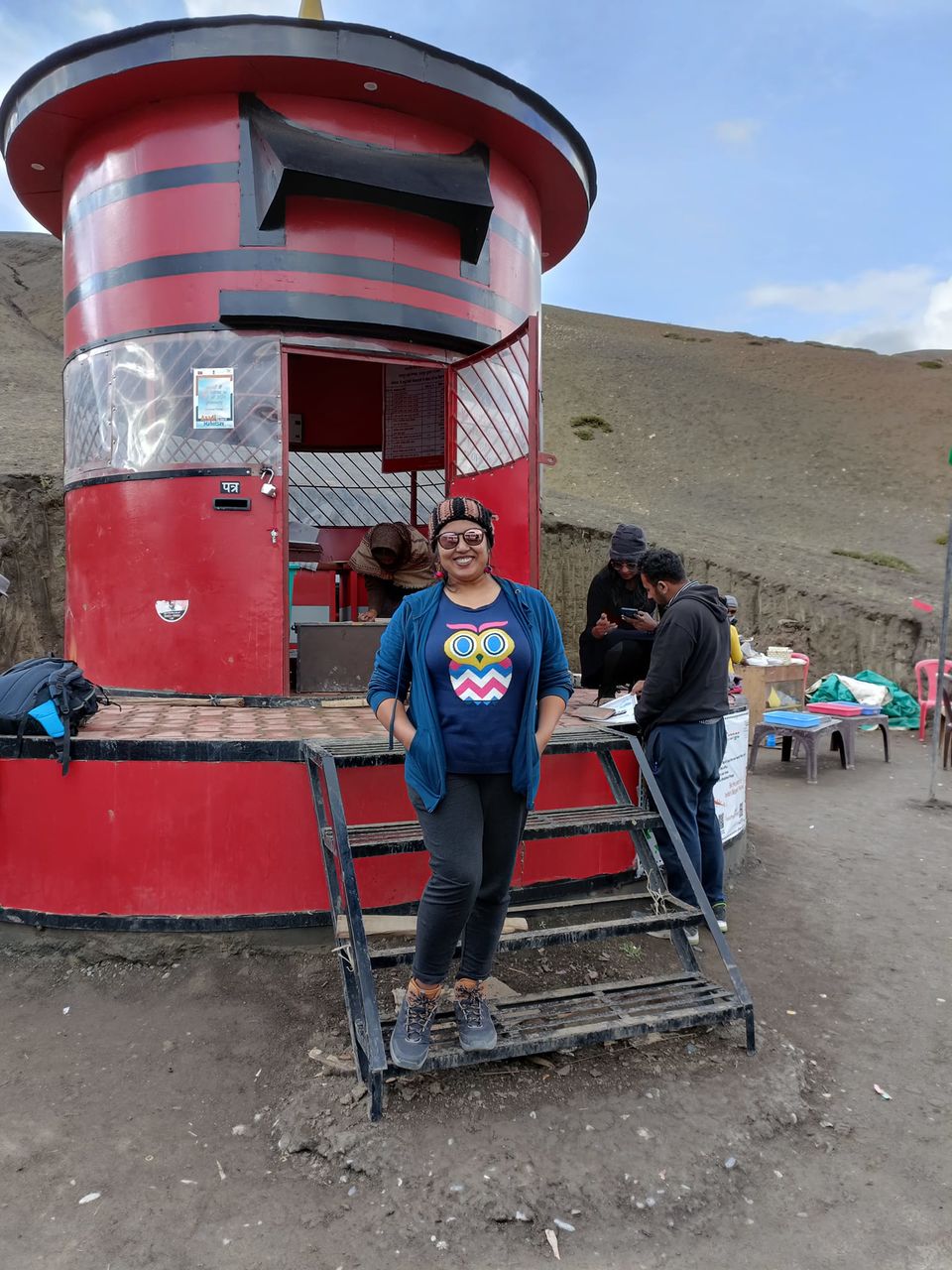
While the old post office used to be the postmaster's house, the new one is an innovative structure, shaped like a post-box.
As we had heard that the post cards mailed from Hikkim rarely reach their destinations, owing to some unknown reason, I was pleasantly surprised when the postcard I sent my mom from Hikkim reached her within a week.
After a hectic day, we reached Komic, the world's highest motorable village, by evening. The night was spent having a local dinner cooked by our Spitian host and listening to real-life paranormal tales shared by my fellow travellers.

We also spent some time stargazing, though the chilling temperatures sent us inside our rooms pretty fast.
Day 6: Komic Sakya Monastery and Chandrataal
While I didn't get any sleep that night, owing to the creepy ghost stories I heard from our group members and the uncomfortable bed I tried to sleep on, I wasn't complaining about the gorgeous view from our homestay roof the following morning.
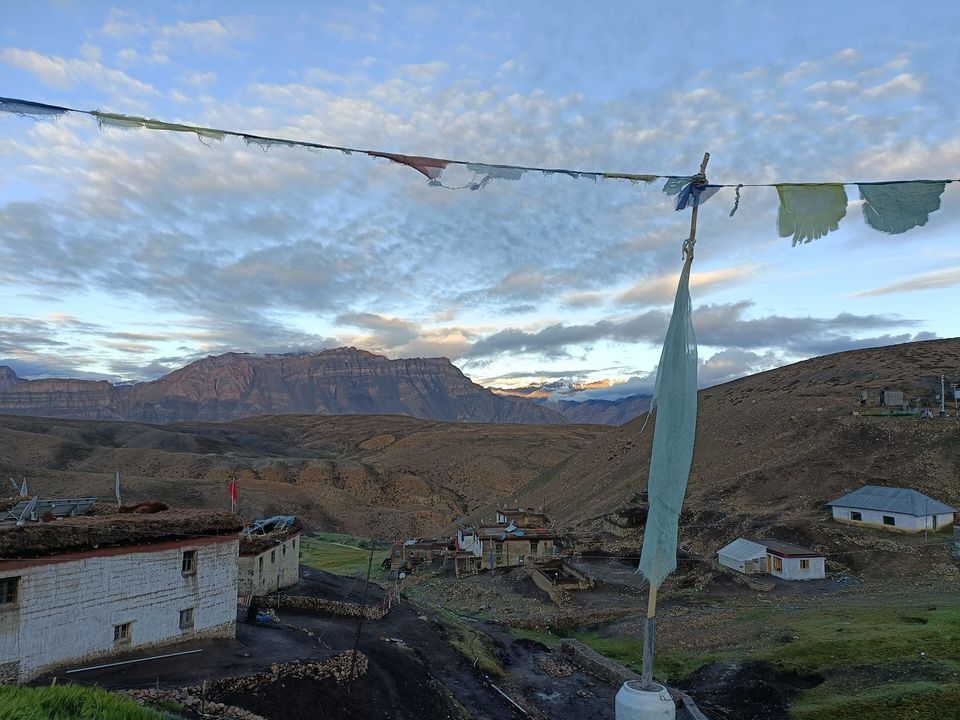
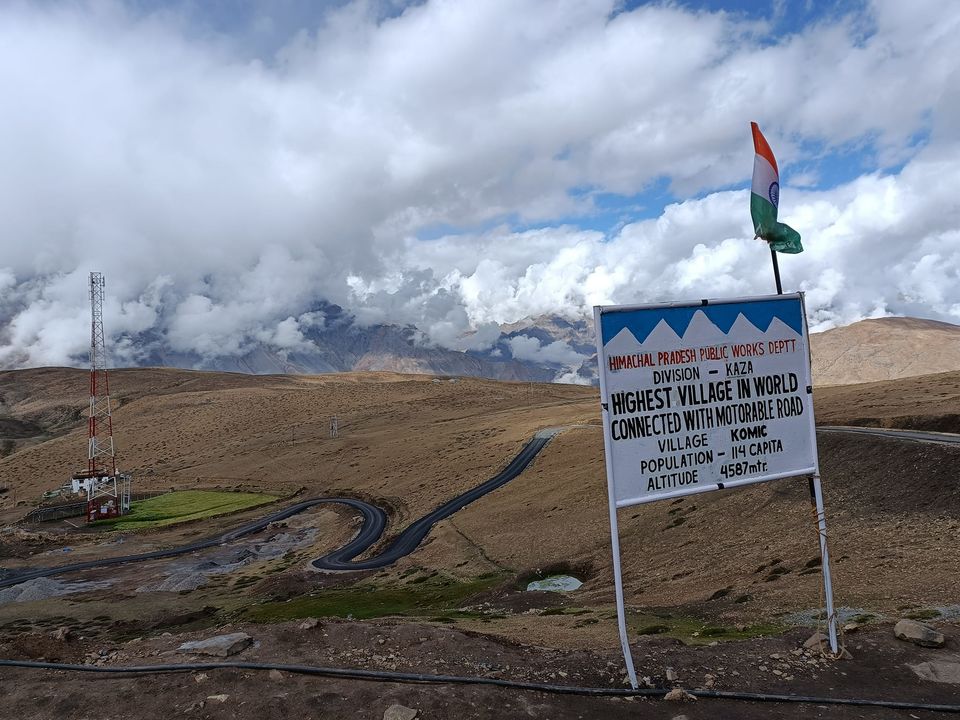
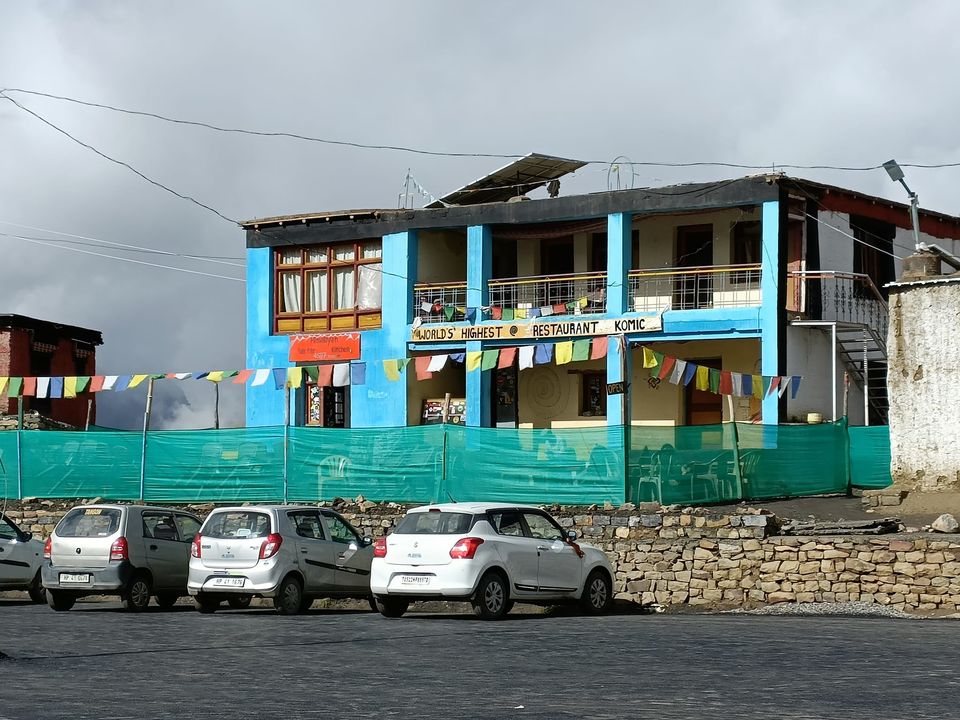
After a few photo ops, which included the "world's highest restaurant", we headed to the Komic Sakya Monastery and a nearby nunnery. We interacted with and posed for selfies with the nuns, some as young as 12 or 13.
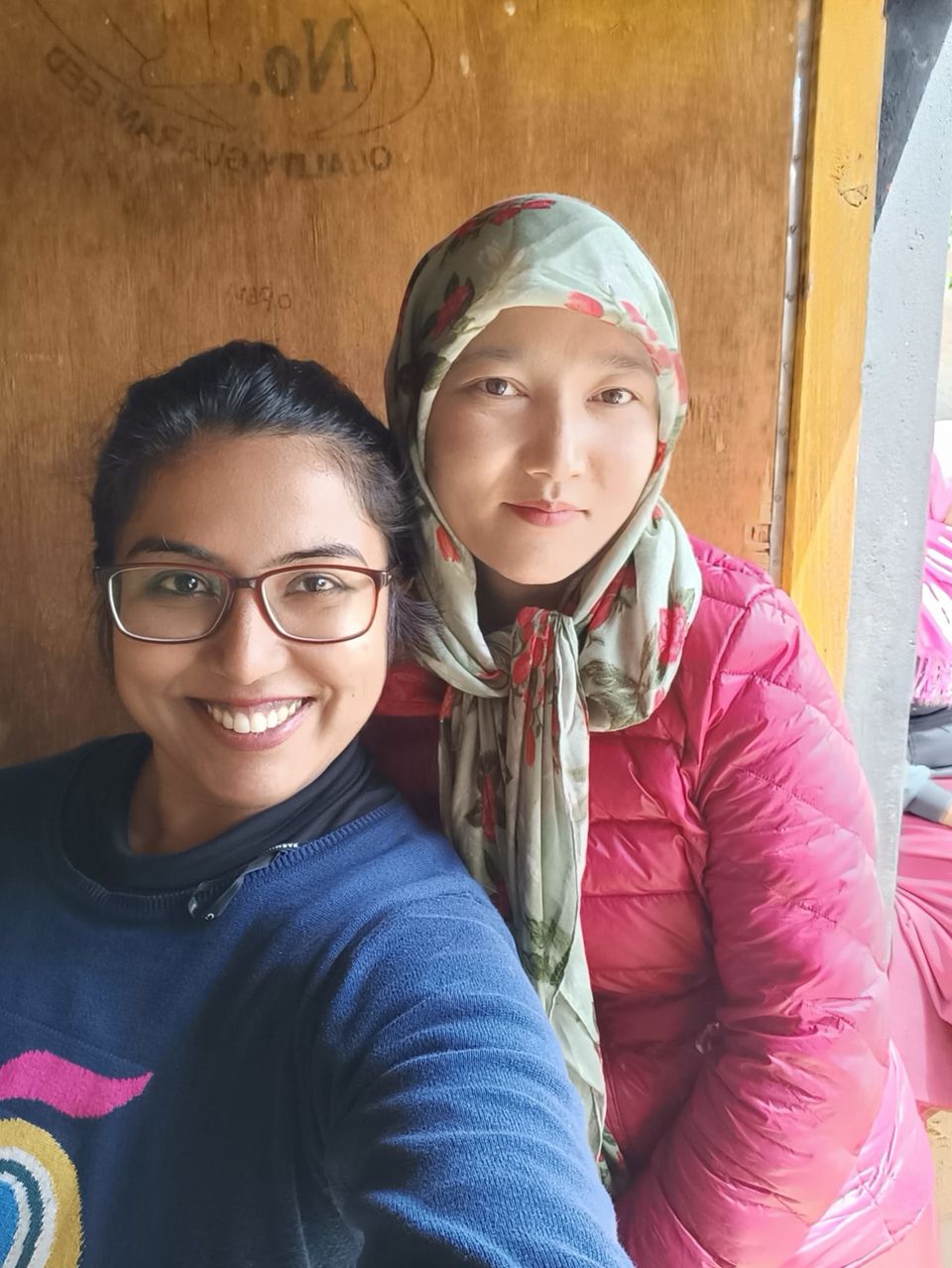
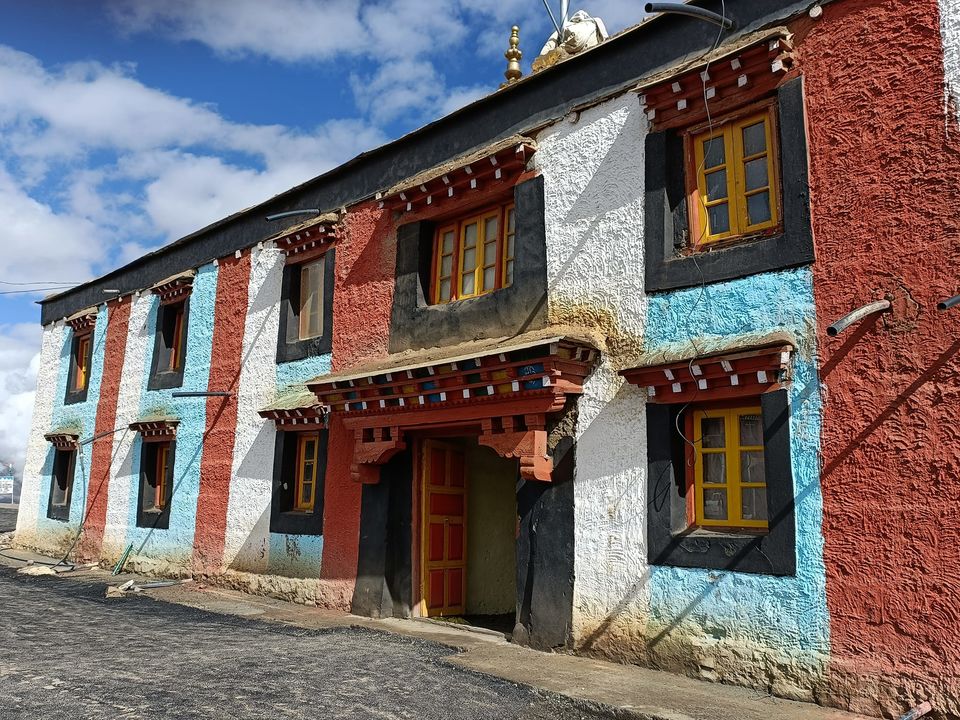
The highlight of the day and of the entire trip was, however, Chandrataal. We reached the sought-after lake by late afternoon. Chandrataal, or the Moon Lake, is so named because it is crescent-shaped. The short trek to the lake from the parking lot takes about 15-20 min. However, once you the reach the lake, you are dumbfounded by its serenity.
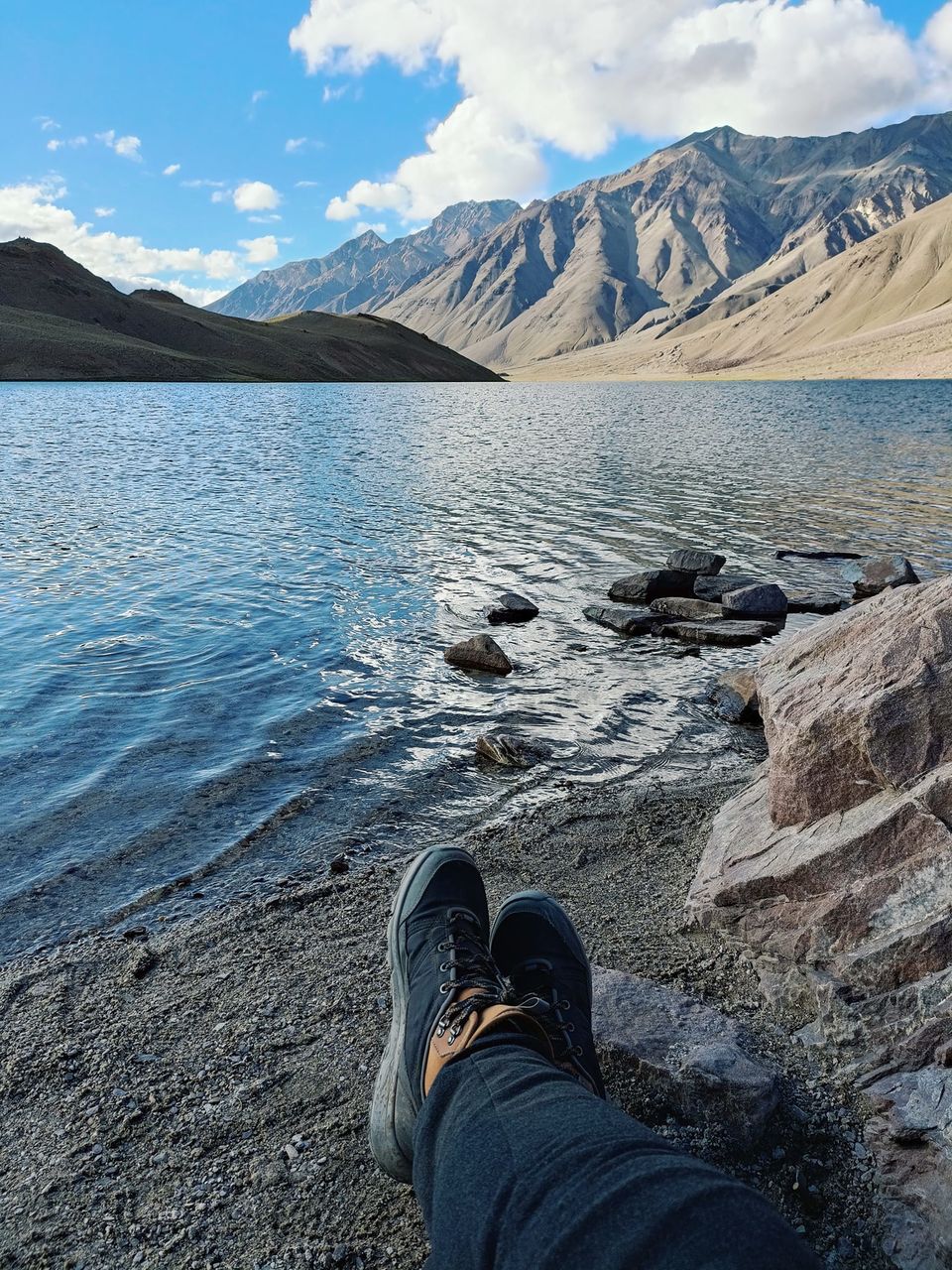
The crystal-clear greenish-blue waters of the lake complement the surrounding landscape and create an ethereal ambience. I posed for very few pictures there, and mostly sat and absorbed the beauty.
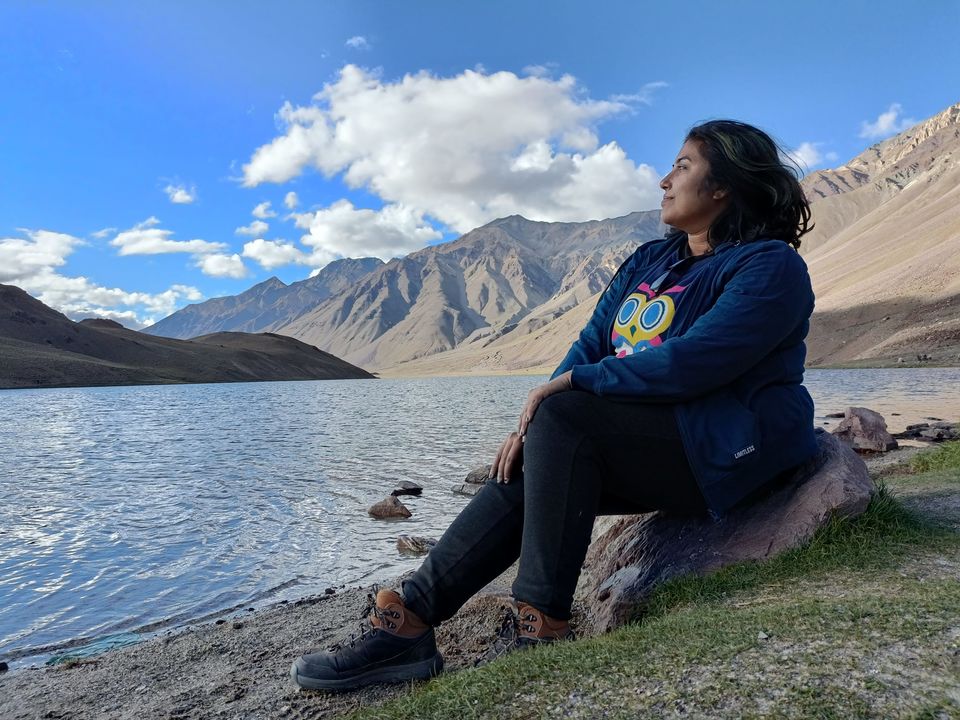
That night, we slept in Swiss tents, but before that, we witnessed the clear skies with glittering stars: the hallmark of this place.
From dealing with a mountain spider in our tent, to listening to the howling winds while falling asleep covered in 4 layers of clothing/winterwear (and still shivering) and filming dew drops evaporating from the tent roofs the next morning, this was definitely the best experience of the trip for me.
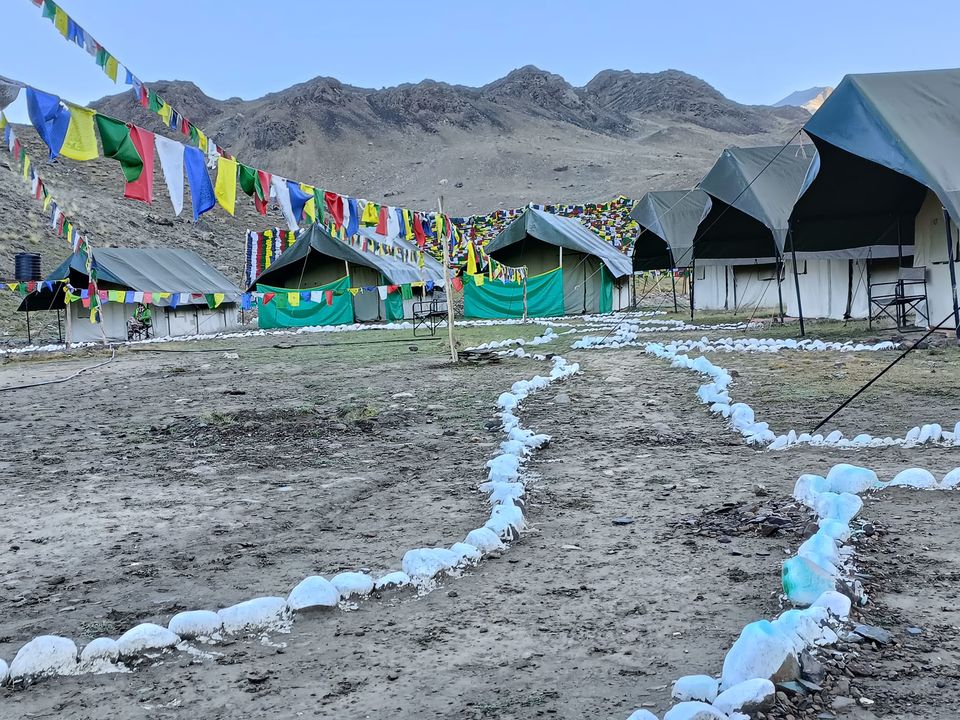
This was a trip of many firsts for me. This was the first time I travelled without a proper bath for 3 days, the first time I used an eco toilet, and the first time I stayed in a tent.
Day 7: Back to Manali
The journey back to Manali the next day was through the same arid terrain of the valley, though we were surprised to find some unusual pink flowers along the track. We also stopped at Batal to speak to the famed "chacha" of "Chacha Chachi Dhaba".
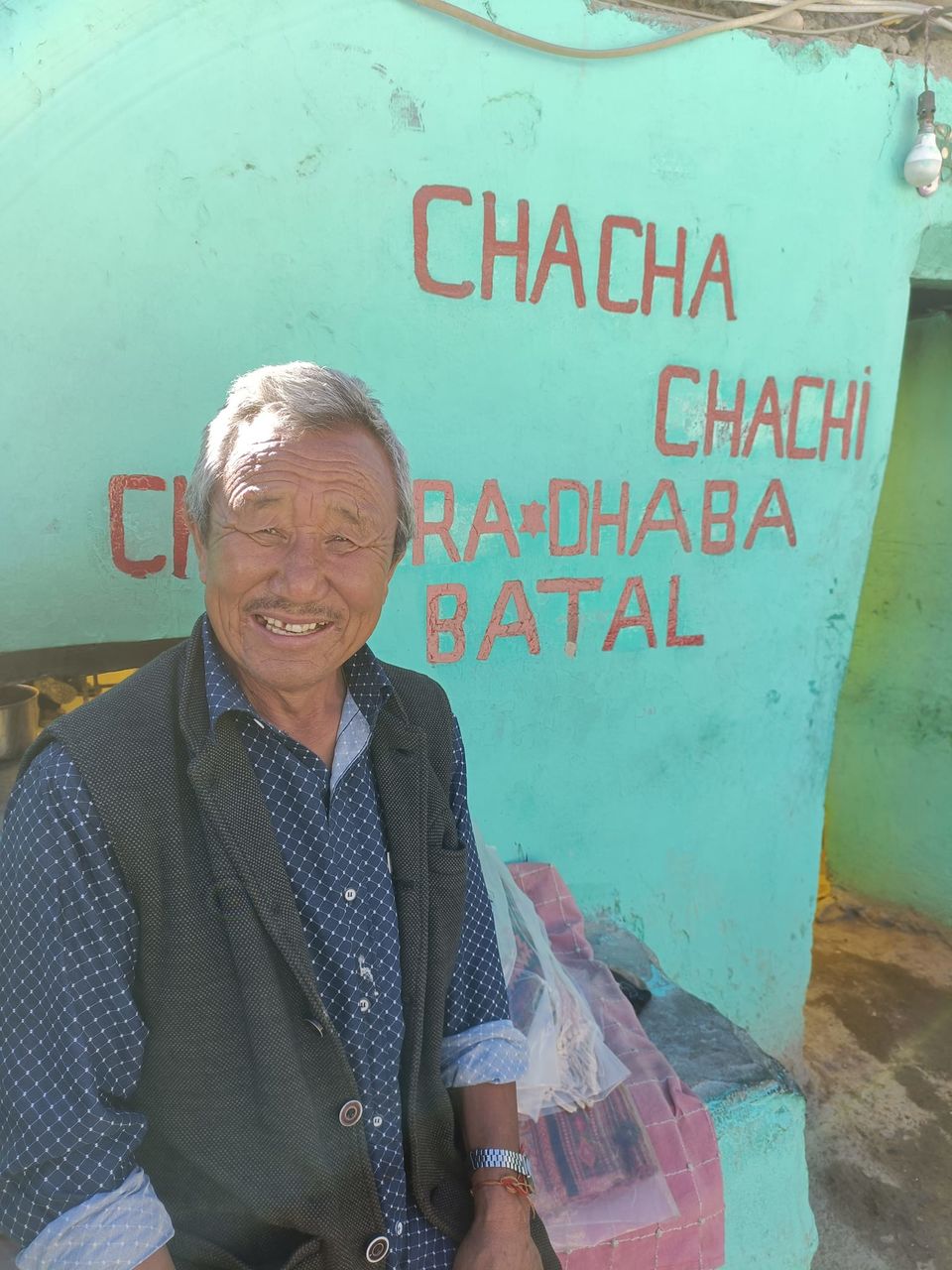
We boarded our bus to Delhi the same evening, and though our bus broke down in Mohali and we had to make do without AC for the rest of the trip to Delhi, we were too dumbfounded to react after our mind-boggling time in Spiti.
The best part of the whole trip was getting to know like-minded travellers from across the country. Many thanks to Suhas and Surabhi, the minds behind Routed India, who made this dream a reality!
